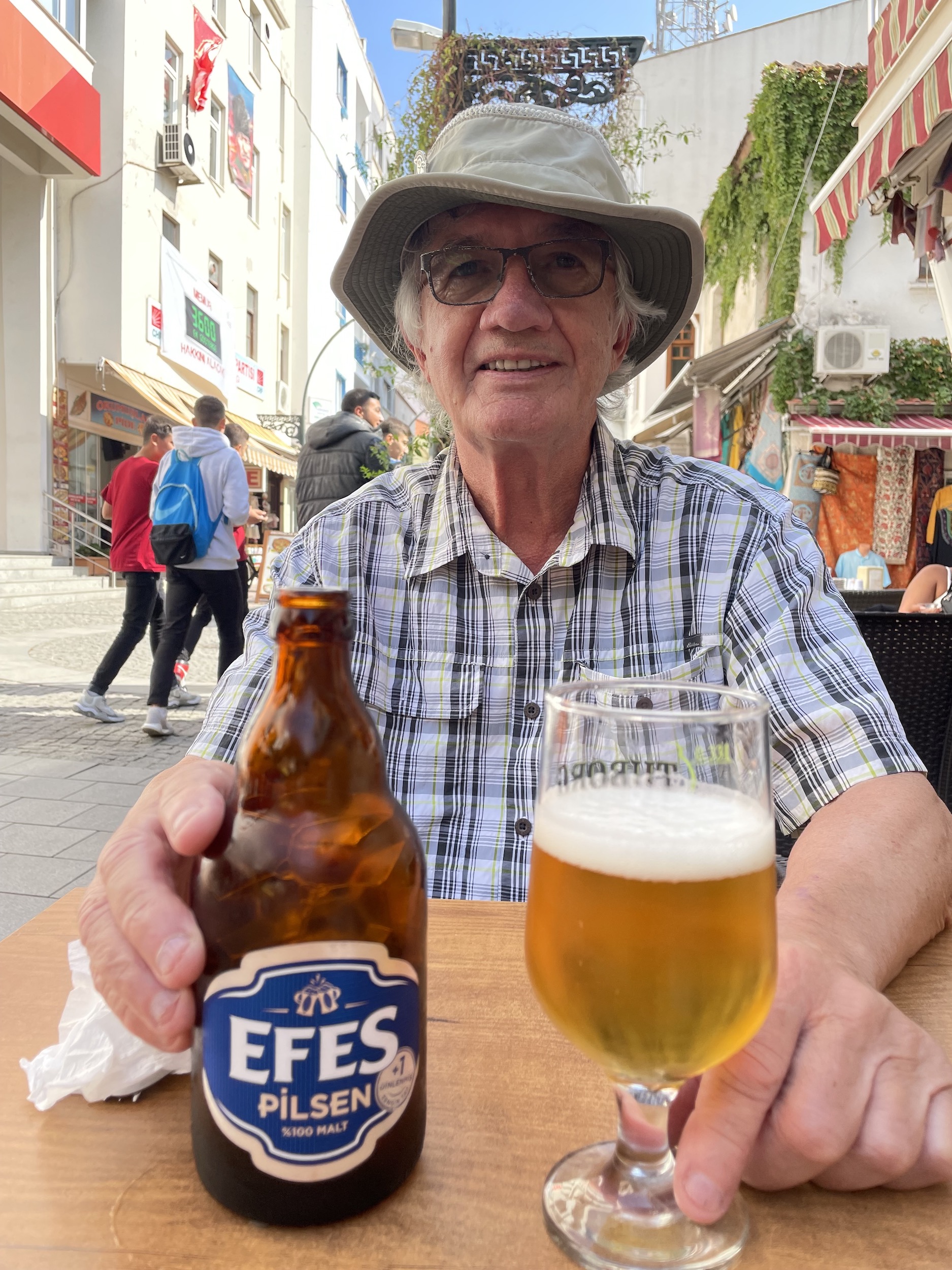The Ephesus Museum, Selcuk, Turkey
This is a long awaited day for many on this Adventures Abroad tour of Western Turkey. Our group will visit a number of sites around the ancient city of Ephesus, arguably the most important place to visit in the entire country after Istanbul. Prior to Covid over 2 million people visited the area which averaged around 10,000 tourists every day. I cannot help but wonder how many others we will share the place with today. Already we have visited the sites of ancient Troy and Pergamon and had them virtually to ourselves. However, before going to the archaeological site our guide Yasemin Reis is taking us to the Ephesus Museum in the small city of Selçuk to get a better understanding of some of the things we’ll see today. Please join us in exploring this very interesting complex.
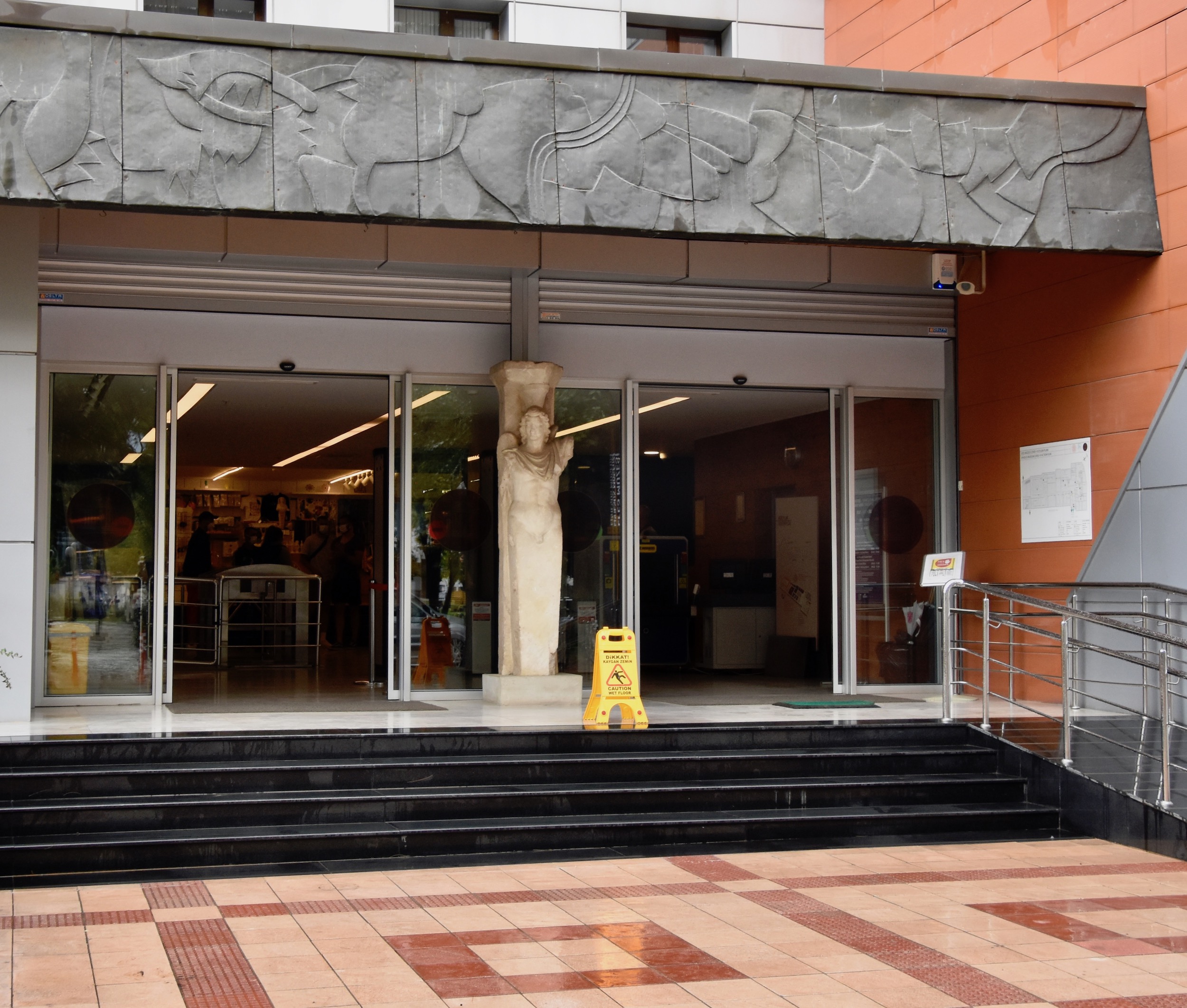
The Ephesus Museum is not a grand structure like the Istanbul Archaeological museum, but Yasemin promises that there is more than enough to hold out attention for a couple of hours. There are artifacts dating back 8,500 years from not only the city of Ephesus, but the Temple of Artemis one of the Seven Wonders of the Ancient World, the Basilica of St. John and many other sites in this part of Anatolia. Pre-Covid most of the museums and many other of the sites we would be visiting would offer audio guides, but at least for now those are on hold. However, most of the artifacts on display have English as well as Turkish descriptions so Yasemin lets us explore on our own. What follows are some of the many highlights of this very good museum set out in the order that I saw them.
I should note that up until 1929 almost every artifact from the city of Ephesus ended up either in European hands, most notably the British Museum or in the Istanbul Archaeological Museums collection. So what we are seeing here today at the Ephesus Museum is actually what was left after the best or most easily found were secreted away. What is quite amazing is how much great stuff was still left to be found after 1929, most of which came from excavations of private Roman villas and homes in Ephesus.
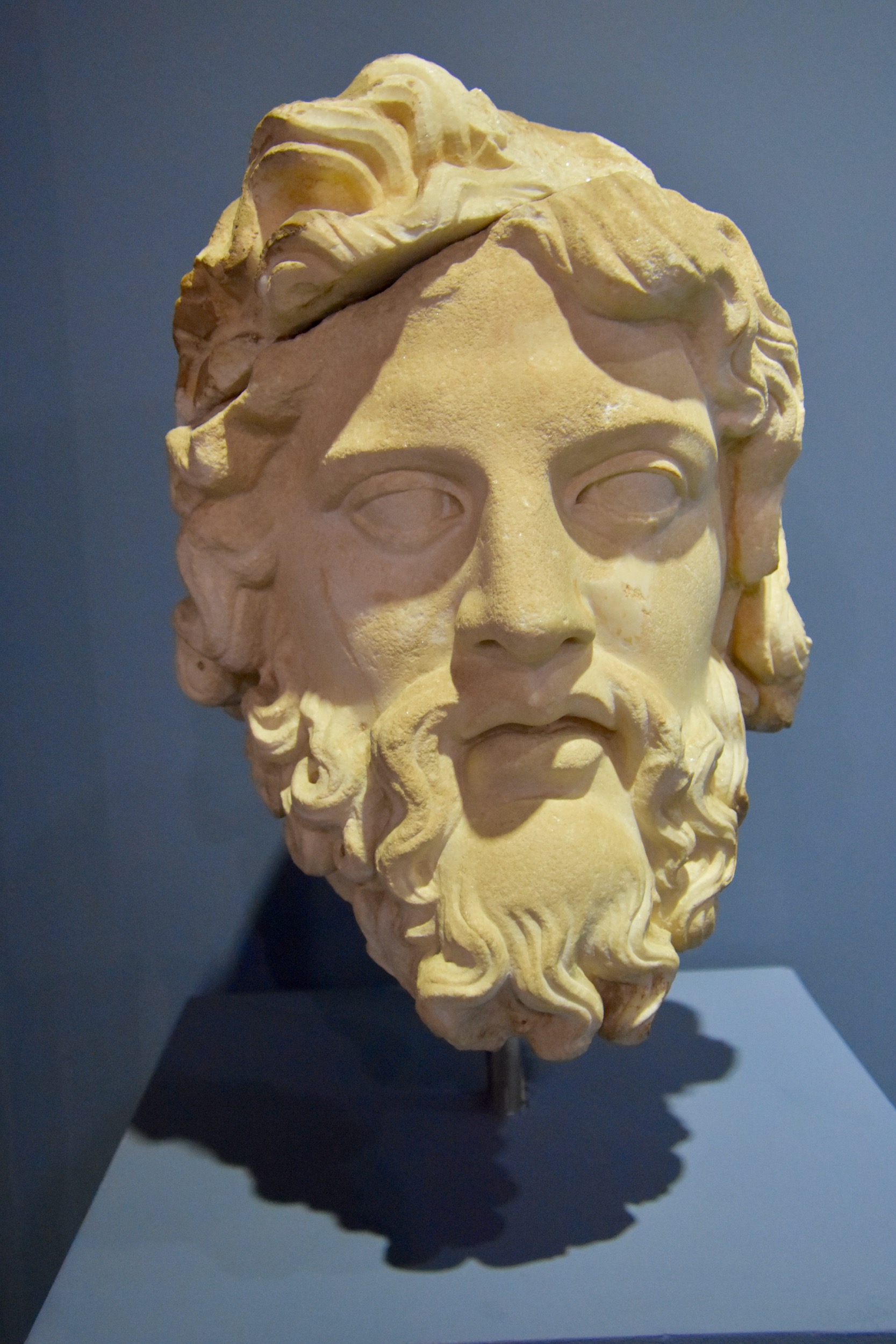
This bust of Zeus dates from the 1st century C.E. and is one of many excellent Roman sculptures found at Ephesus. What is interesting to me is that in the Roman world the Greek Zeus became Jupiter, but in those parts of the empire that were settled by Greeks like the coast of Turkey it appears that he kept his Greek name.
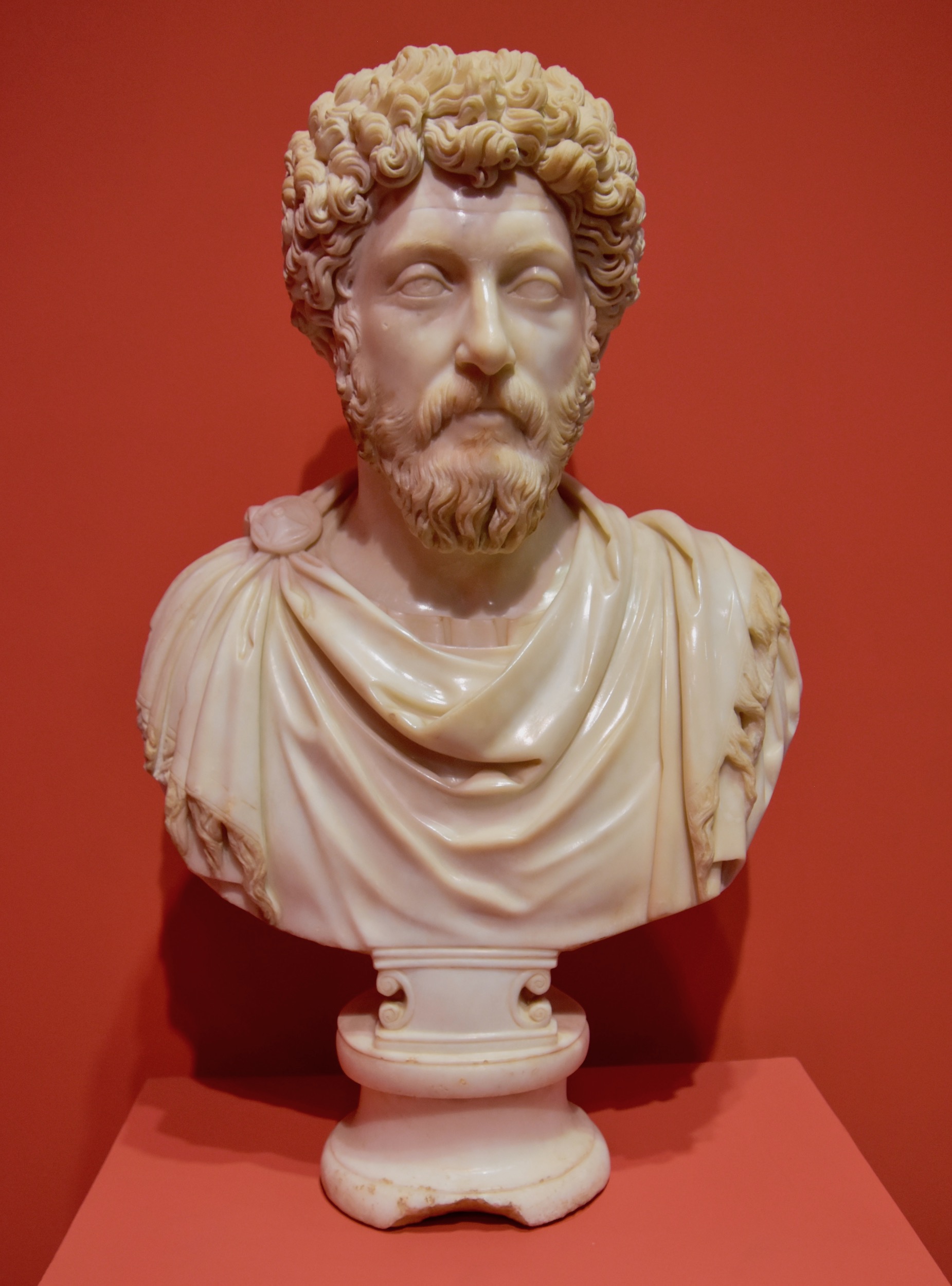
The next item of interest in the Ephesus Museum is this excellent marble bust of the Roman emperor and philosopher Marcus Aurelius, considered to be one of the greatest of the Romans. His Meditations written in twelve volumes is considered one of the great works of ancient philosophy and is still widely taught in philosophy classes today. Can you imagine a modern leader like a Trump or a Putin being able to produce something like this?
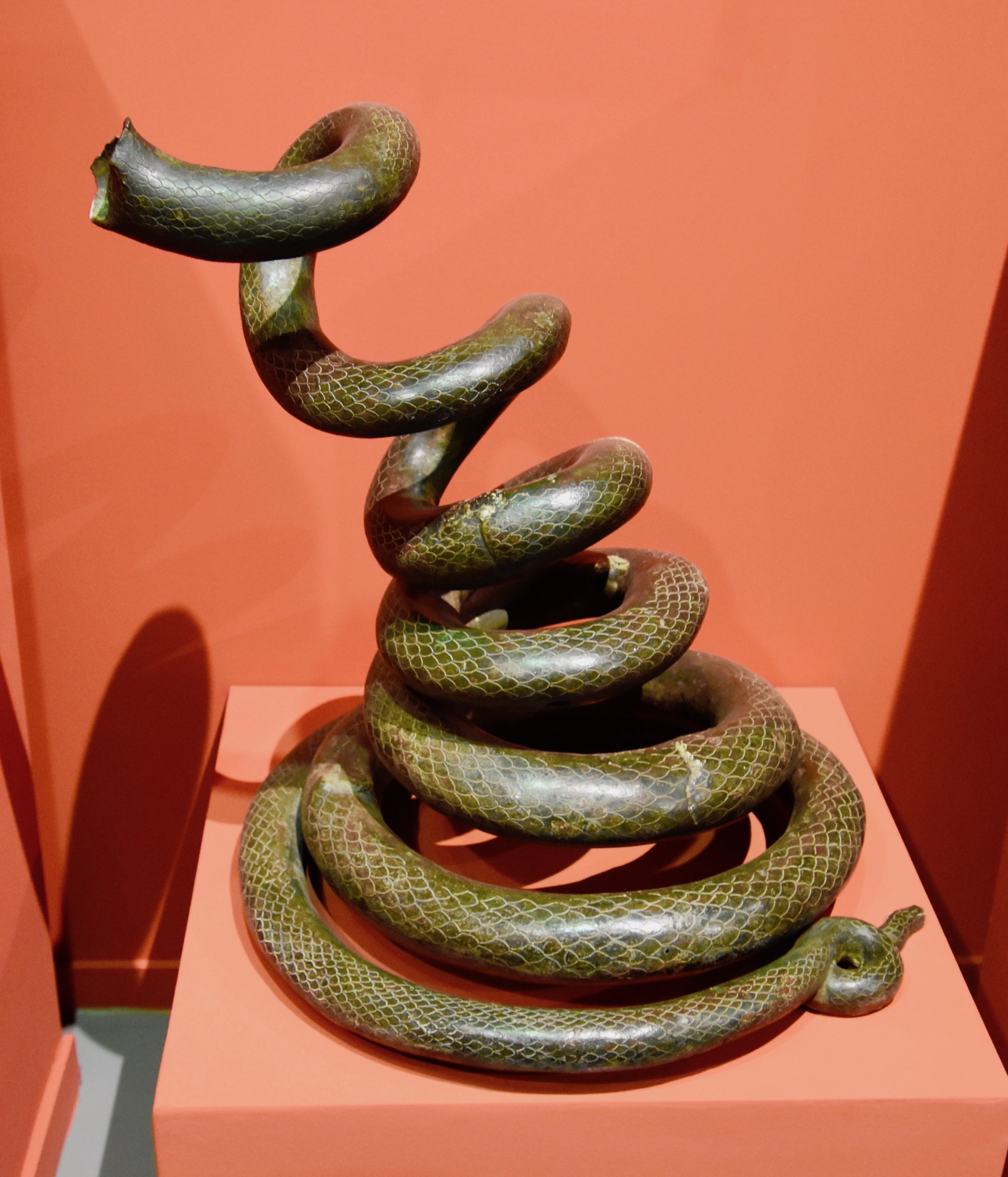
This headless bronze snake was found in a Roman home that also contained paintings of the emperor Tiberius and his mother Livia. On our visit to Ephesus we will get a first hand look at some of these Roman mansions that have recently been opened to the public.
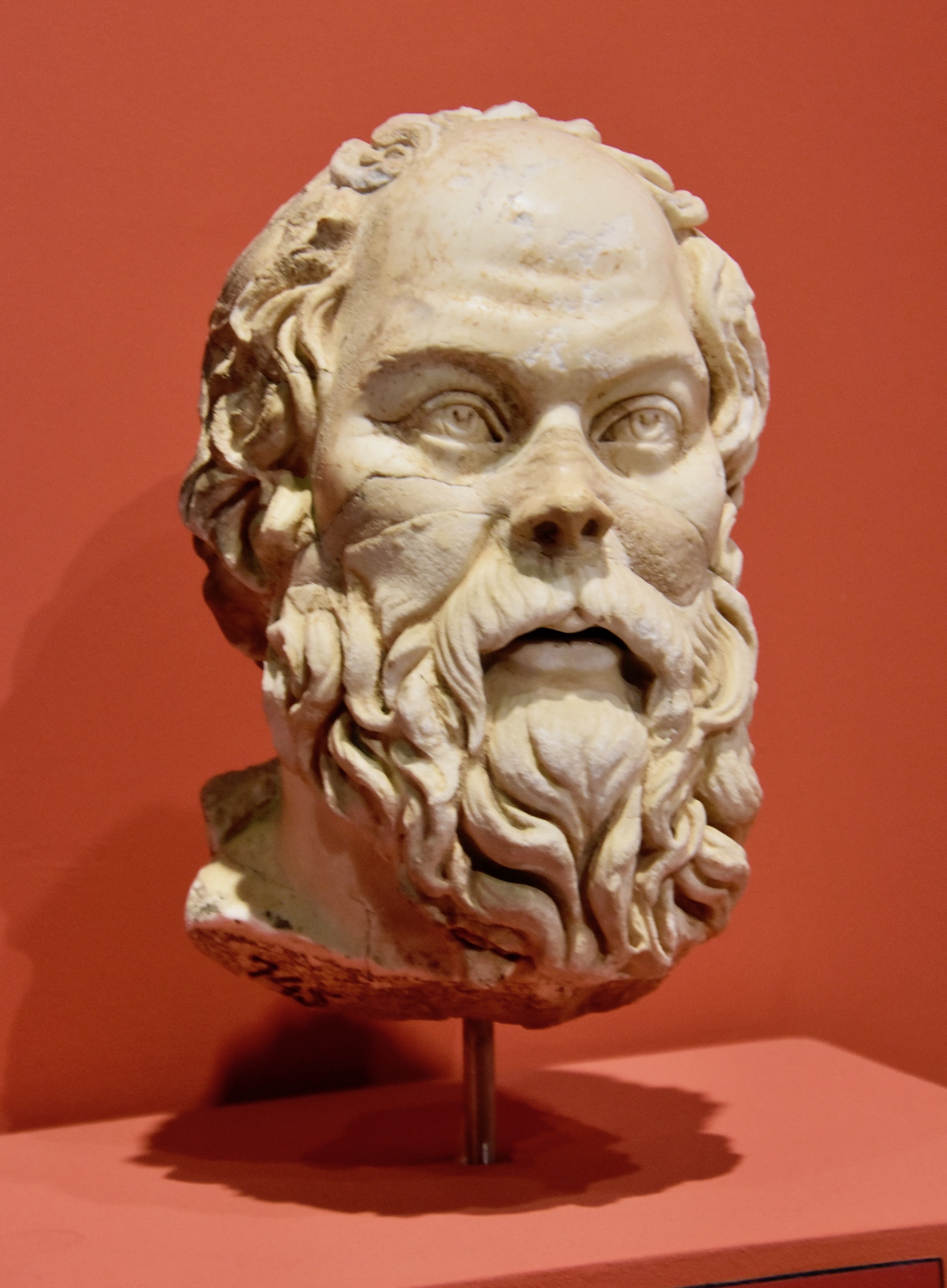
Next up from the Ephesus Museum is this bust of Socrates, the greatest of all philosophers, at least in my opinion. I keep a magnet of his visage on my fridge door to look at every day to remind me of the most famous saying attributed to him – “The only thing I know is that I know nothing.” This sculpture is from the 4th century CE which was very late in the western Roman Empire and over 700 years after Socrates was executed. It shows the staying power of this great man who actually never wrote a single thing.
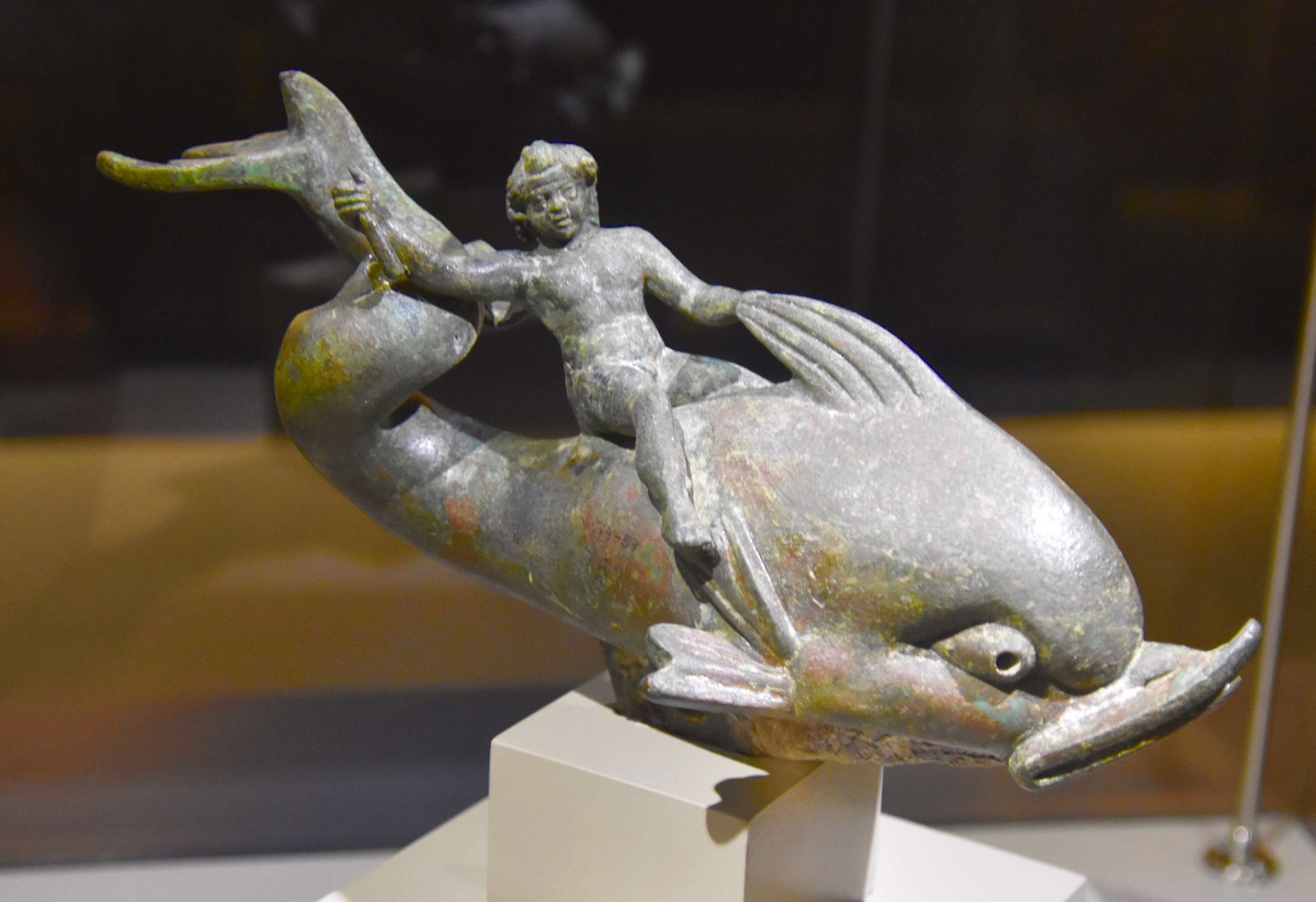
Boys riding dolphins is a very common theme in both Greek and Roman art and you can still buy sculptures like this for your garden, sometimes even as fountains. This bronze example is from the 2nd century BCE. It is a great example of whimsical expression and there was no boy more whimsical or mischievous than little Eros.
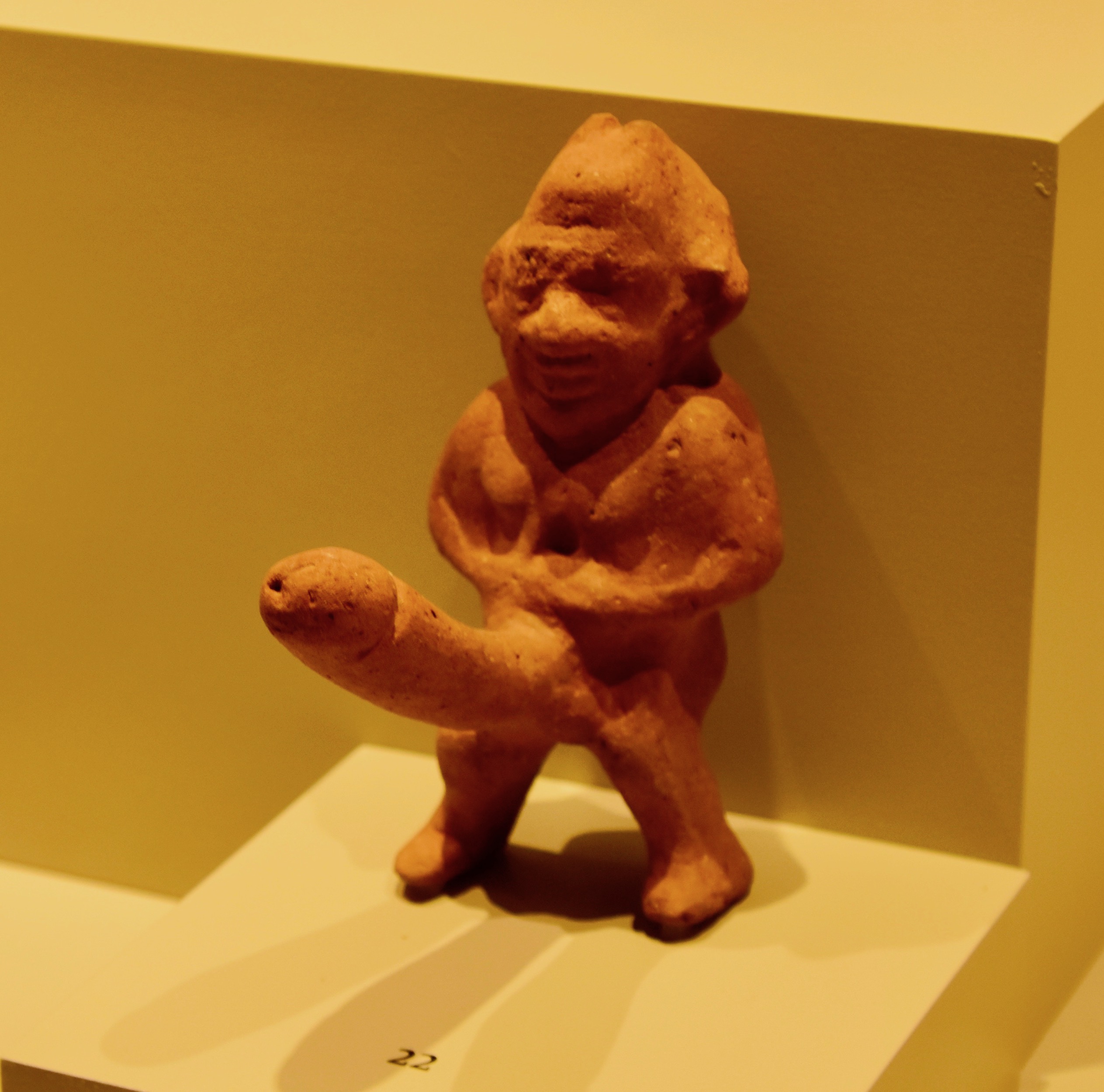
Speaking of whimsy, no museum of Roman and Greek artifacts worth its salt is without at least one depiction of Priapus and the Ephesus Museum is no exception. These images of the god of fertility were mass produced in Roman times and considered to be symbols of good luck. Nuff said.
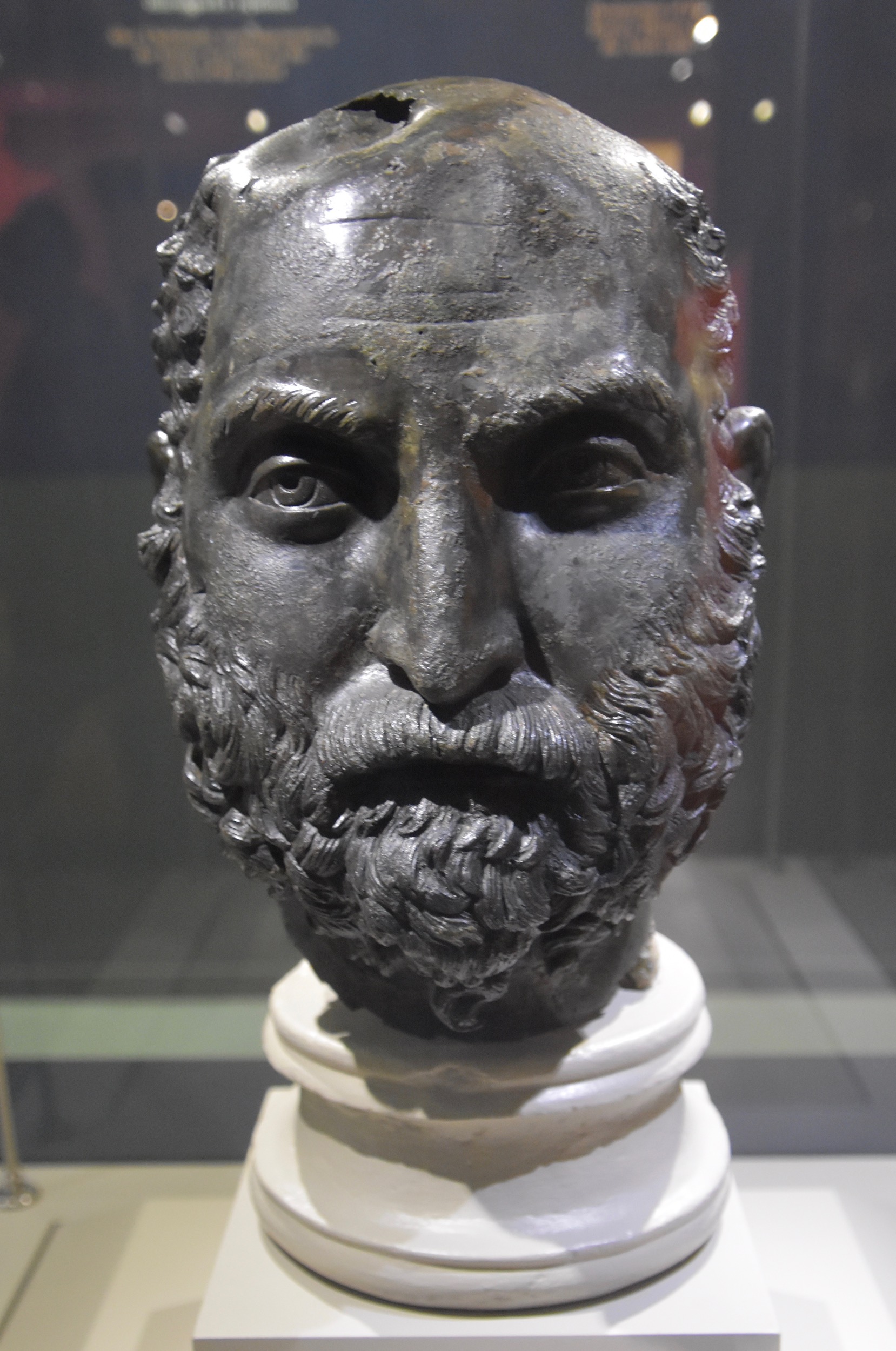
By now you might be getting a good idea of just how many different materials the Greek and Roman artists work with to make their creations that have lasted well over two millennia. This bronze piece dates from the mid third century CE and is simply titled Head of a Philosopher. One of the greatest of the early philosophers was Heraclitus who lived in Ephesus over 2,500 years ago so I’ll go with him. He was a major influence on Plato, Aristotle and right up until modern times with the likes of Carl Jung and Franz Kafka. Unfortunately some time during his 1,800 year existence this philosopher took quite a rap on the head.
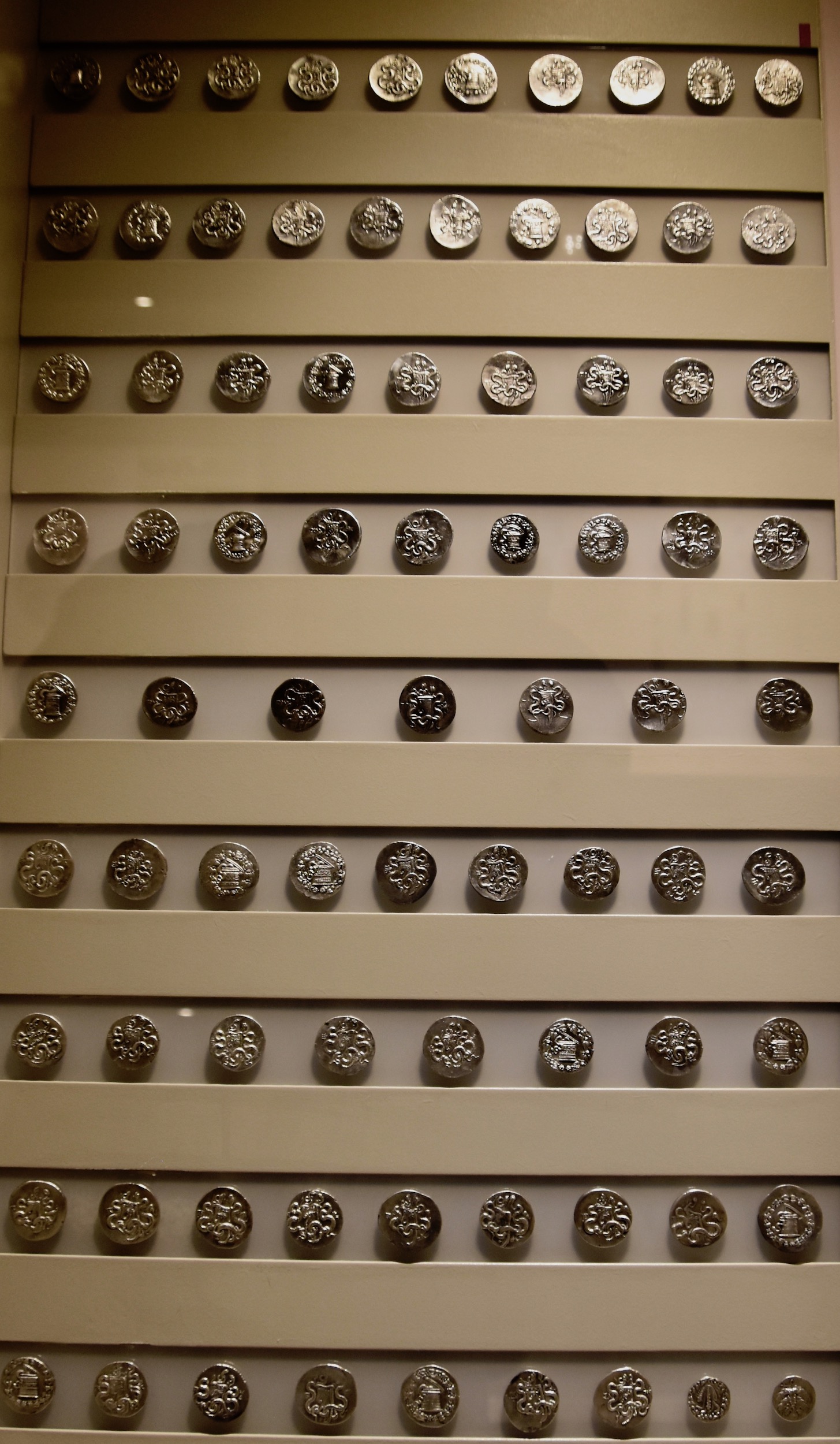
The Ephesus Museum has a very extensive collection of Ephesian coinage much of which is polished so well that the coins look like they were minted yesterday. If you are a numismatist then this is a place you must visit while in Turkey.
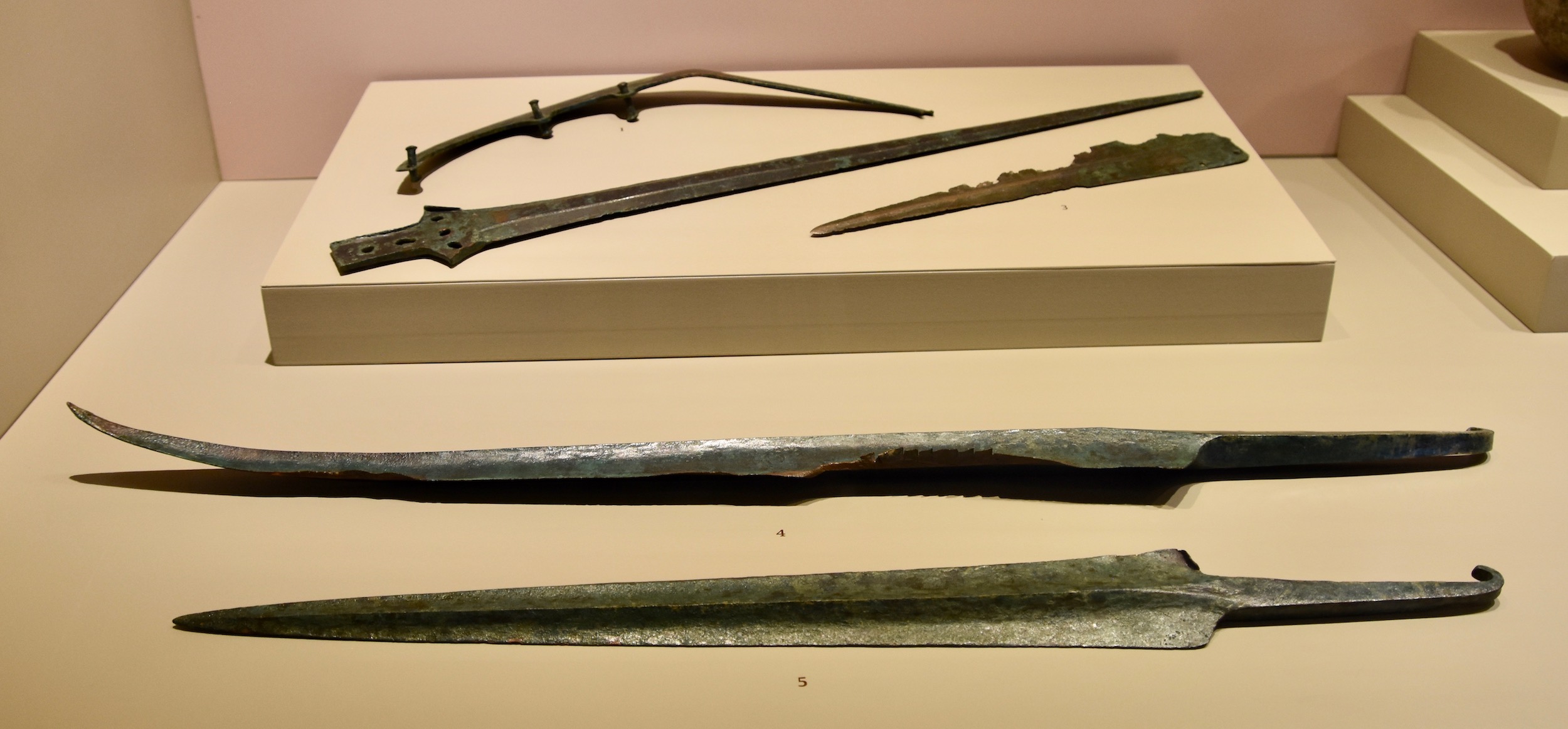
The Ephesus Museum is not primarily a place to see a lot of signs of ancient warfare as are some. Ephesus and the surrounding area enjoyed centuries of relative peace under Roman and Byzantine rule. However the spear points above date back to before the founding of the city in the 10th century BCE and may be examples of Hittite influence in the area during the early Bronze Age. It is scary to think of just how sharp they could make these objects of war up to 5,000 years ago. Whenever I see exhibits like this my mind automatically reverts to the absolutely gruesome descriptions of death from spear points like these that Homer describes in The Iliad. There are 240 battlefield deaths in that epic and the majority are from spear thrusts.
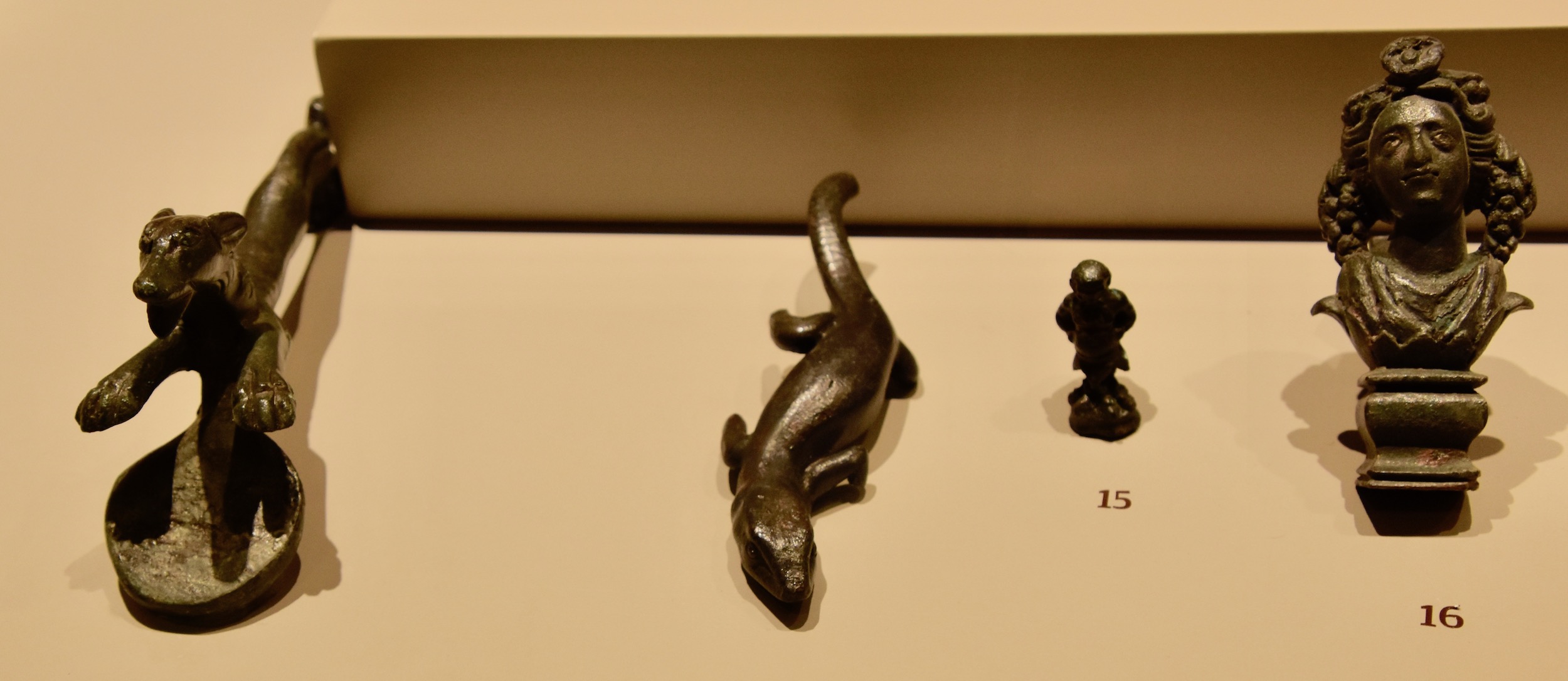
This collection of small household items dates from the 1st century BCE to the the rd century CE. They are part of a much larger collection of toys, good luck charms and other household items that were found in the homes at Ephesus.
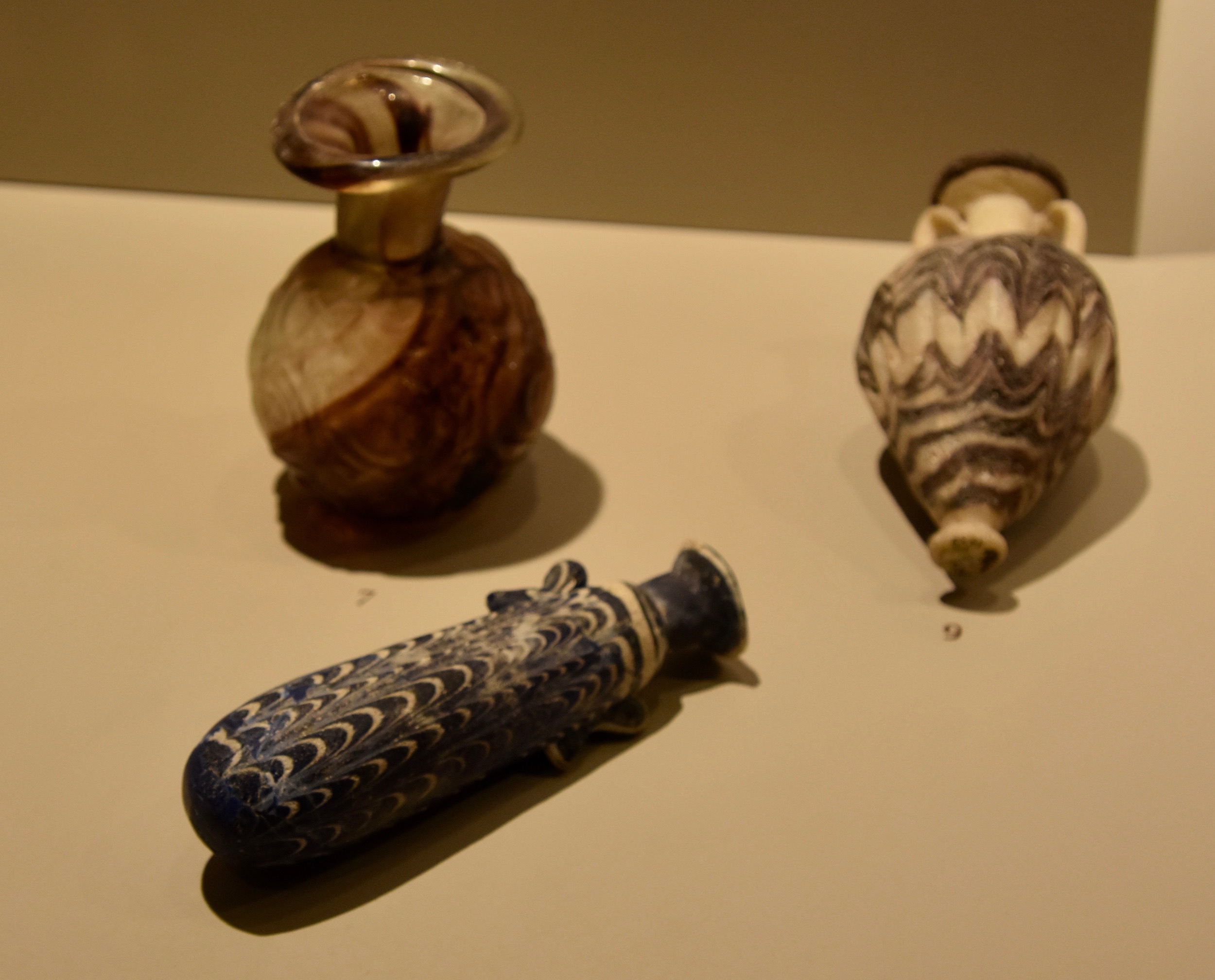
If you are familiar with the lovely glass being produced today on the Venetian island of Murano you will recognize similarities with these Roman glass objects which are up to 2,000 years old. Although glass making dates back to at least 3,600 BCE, it was not until the 1st century BCE that the technique of glass blowing was developed in the Roman province of Syria. Once this was discovered decorative glass became a luxury commodity throughout the Roman Empire. I’m always amazed to see glass that is both this nice and this old and how little has changed in the 2,000 years since glass blowing began.
This is a small bowl we purchased in Murano a few years ago, but it would not have looked out of place in one of the noble homes of Ephesus.
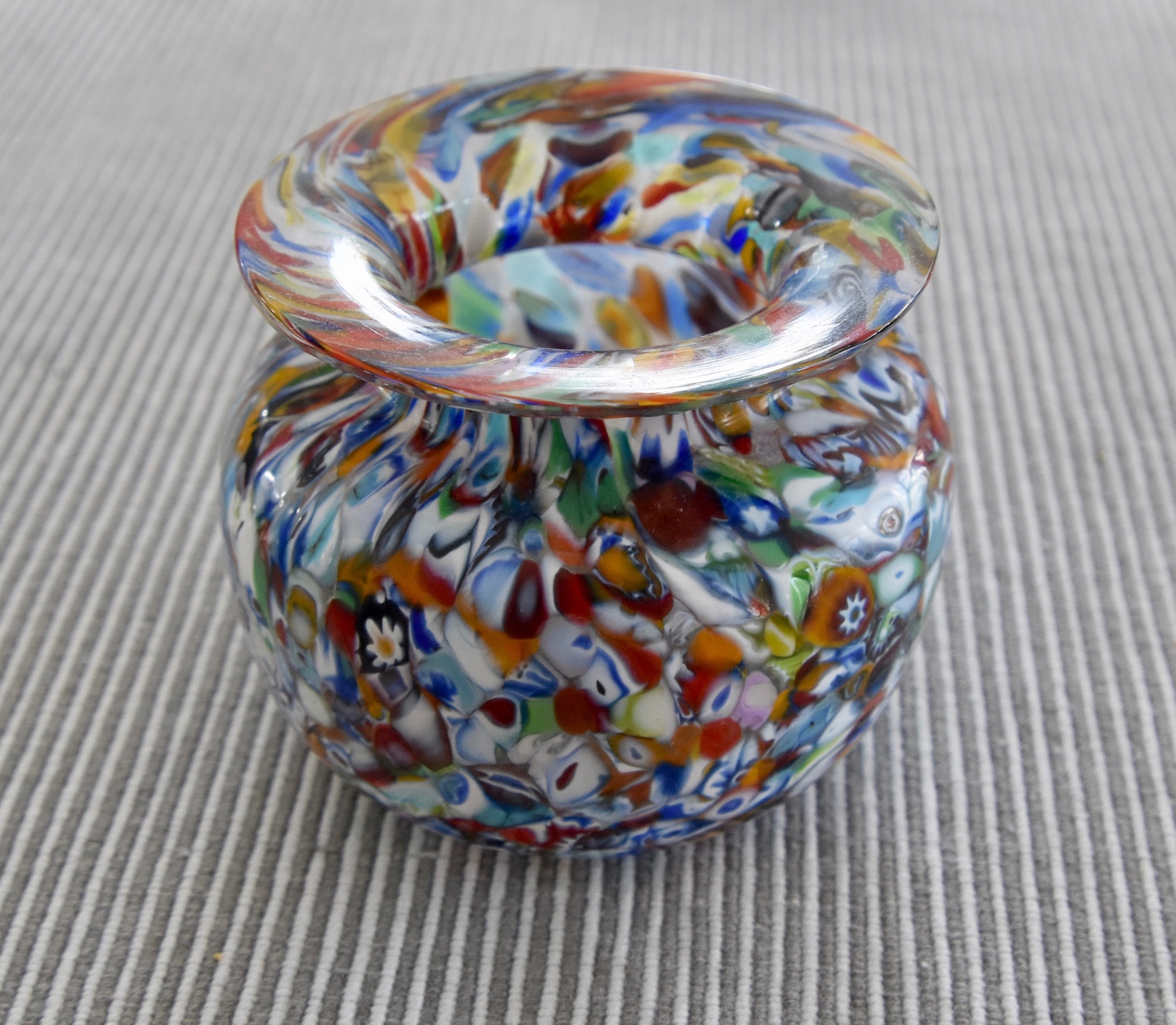
One of the most common forms of Greek Archaic sculpture is the kouros which depicts a naked and quite rigid youth with long hair and an enigmatic expression. They are remarkably similar in style to earlier Egyptian statues and I cannot believe that they were not borne out of knowledge of the Egyptian method.
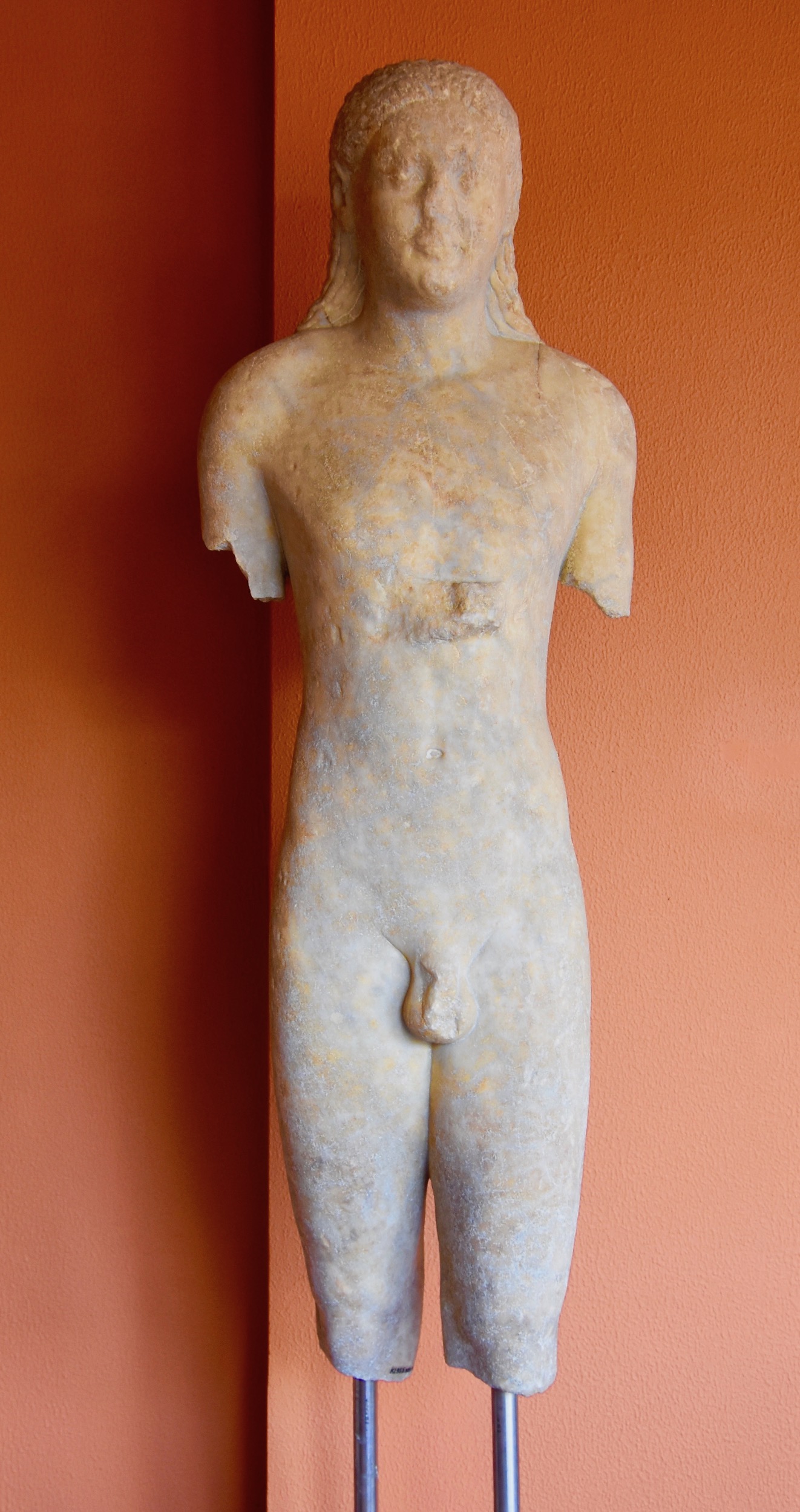
The kouros in the Ephesus Museum dates from the 6th century BCE which was about the period in time that the kouros were the height of fashion. This particular kouros was created from a type of marble that was quarried near Ephesus and has a distinct look with its bluish and creamy undertones.
From this point you enter a courtyard that lies in the middle of the museum and here you will find sarcophagi and other bits and pieces of ancient architecture that tend to get second billing and thus relegated to the exterior.
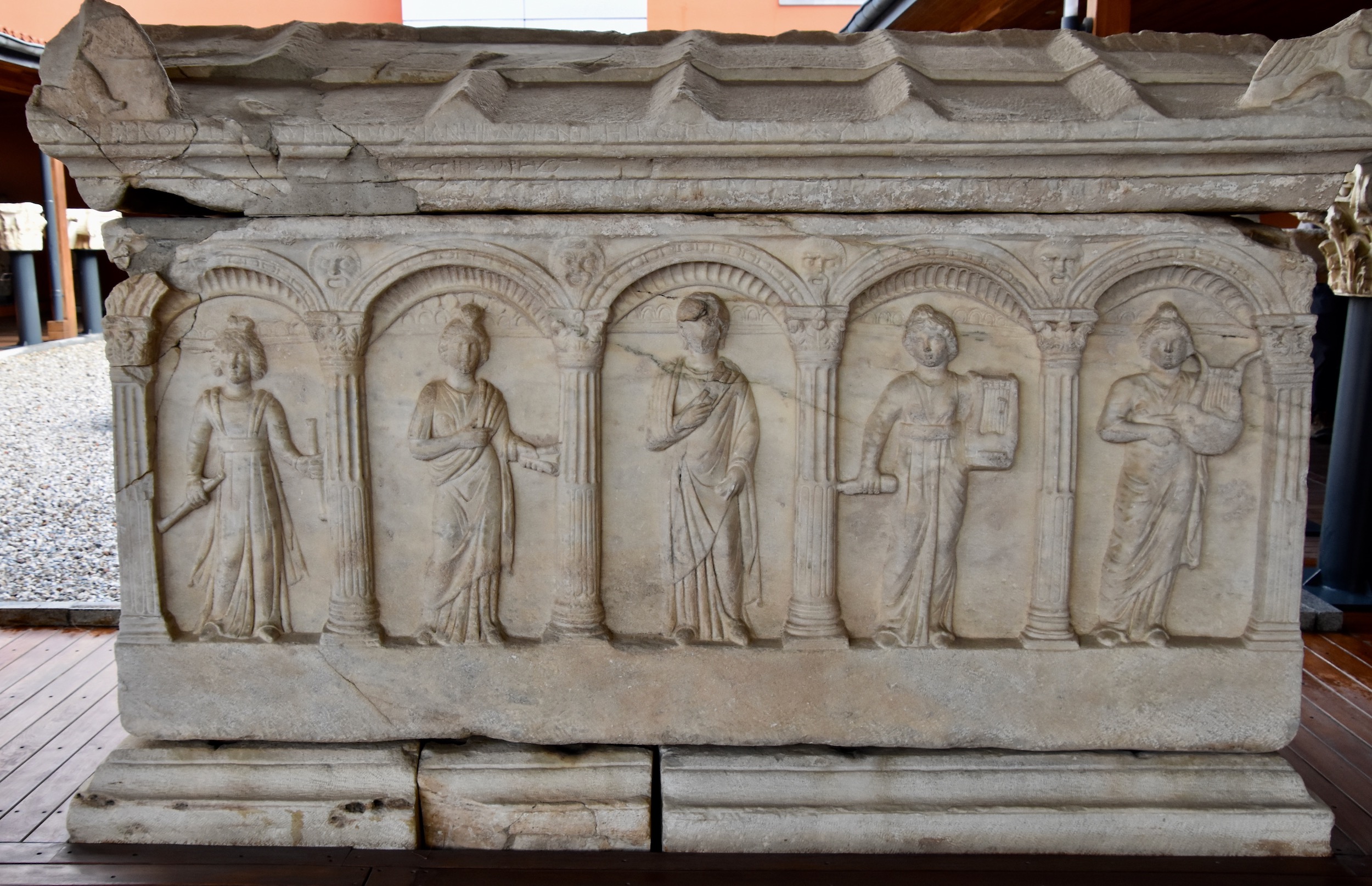
In my post on the Istanbul Archaeological Museum I went on at some length about its incredible collection of sarcophagi. The Ephesus Museum also has some sarcophagi, but I’ll only go into detail on this one, the so-called Sarcophagus of the Muses which dates from the 3rd century CE. From the photo you can see that it is designed as a miniature temple with the Corinthian columns that were in favour in the late classical period. Above each capital is a man’s face and between the columns stand five muses, each with a different musical instrument. The other four muses appear on the ends, two on each side, apparently holding the traditional masks representing tragedy and comedy.
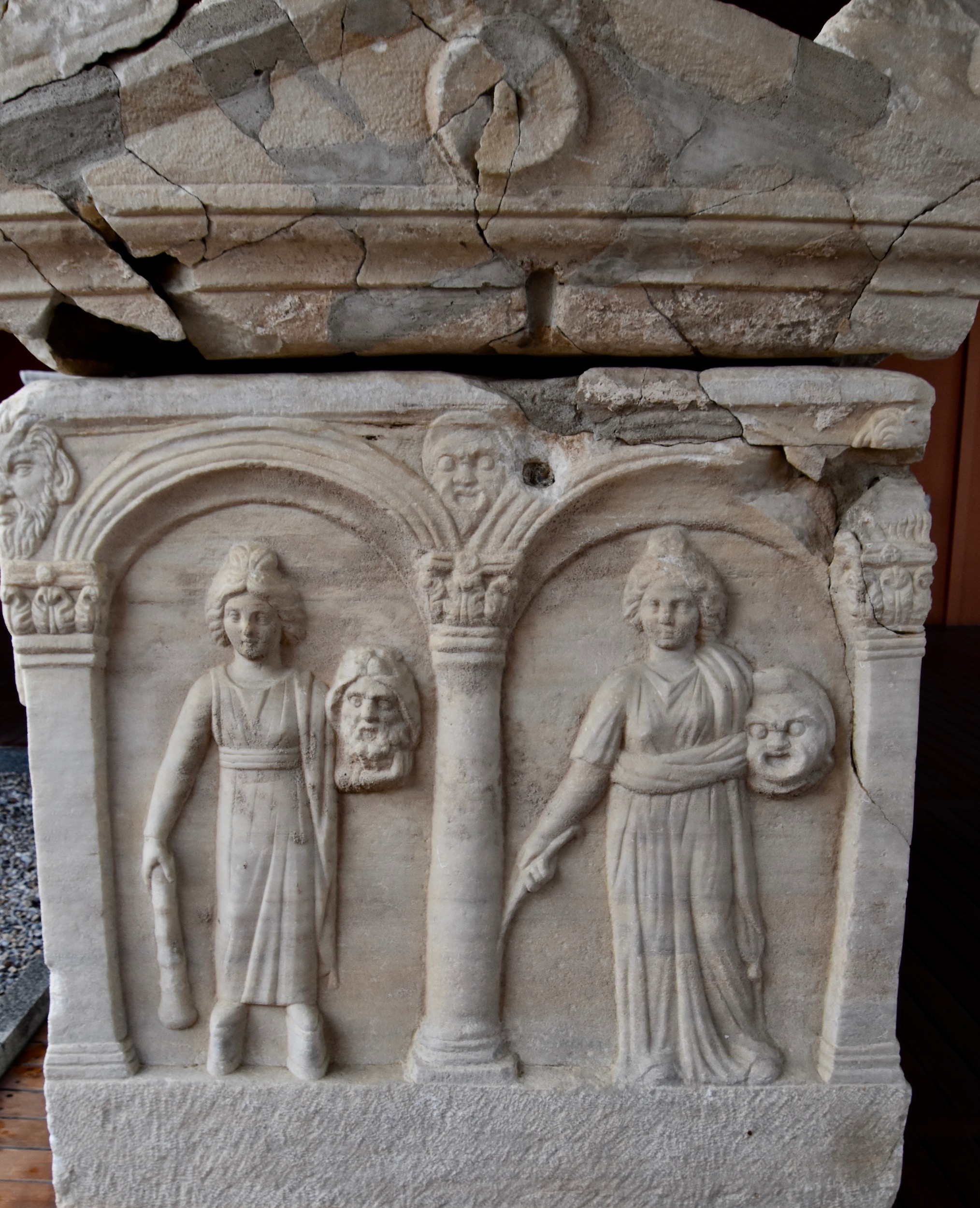
Also outside is this frieze depicting gladiators in combat with the guy in the middle looking like a space alien..
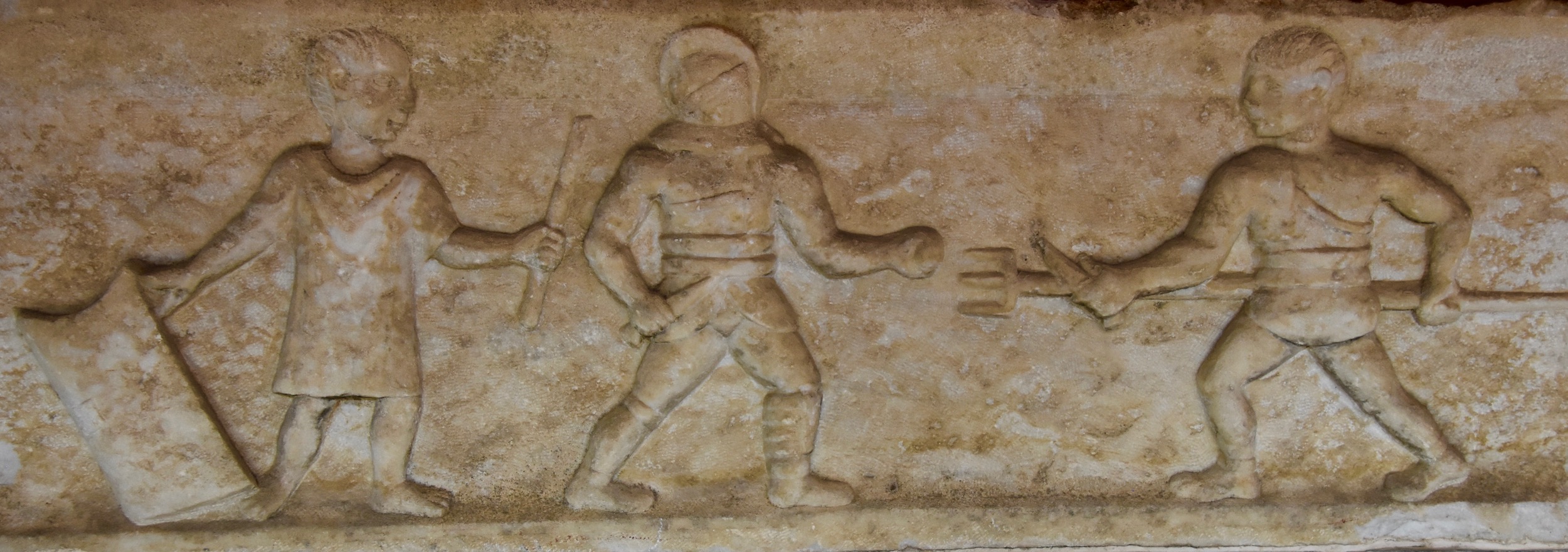
This is a photo of Alison in the courtyard which has a lot of capitals on display, some of which are from the Temple of Artemis.
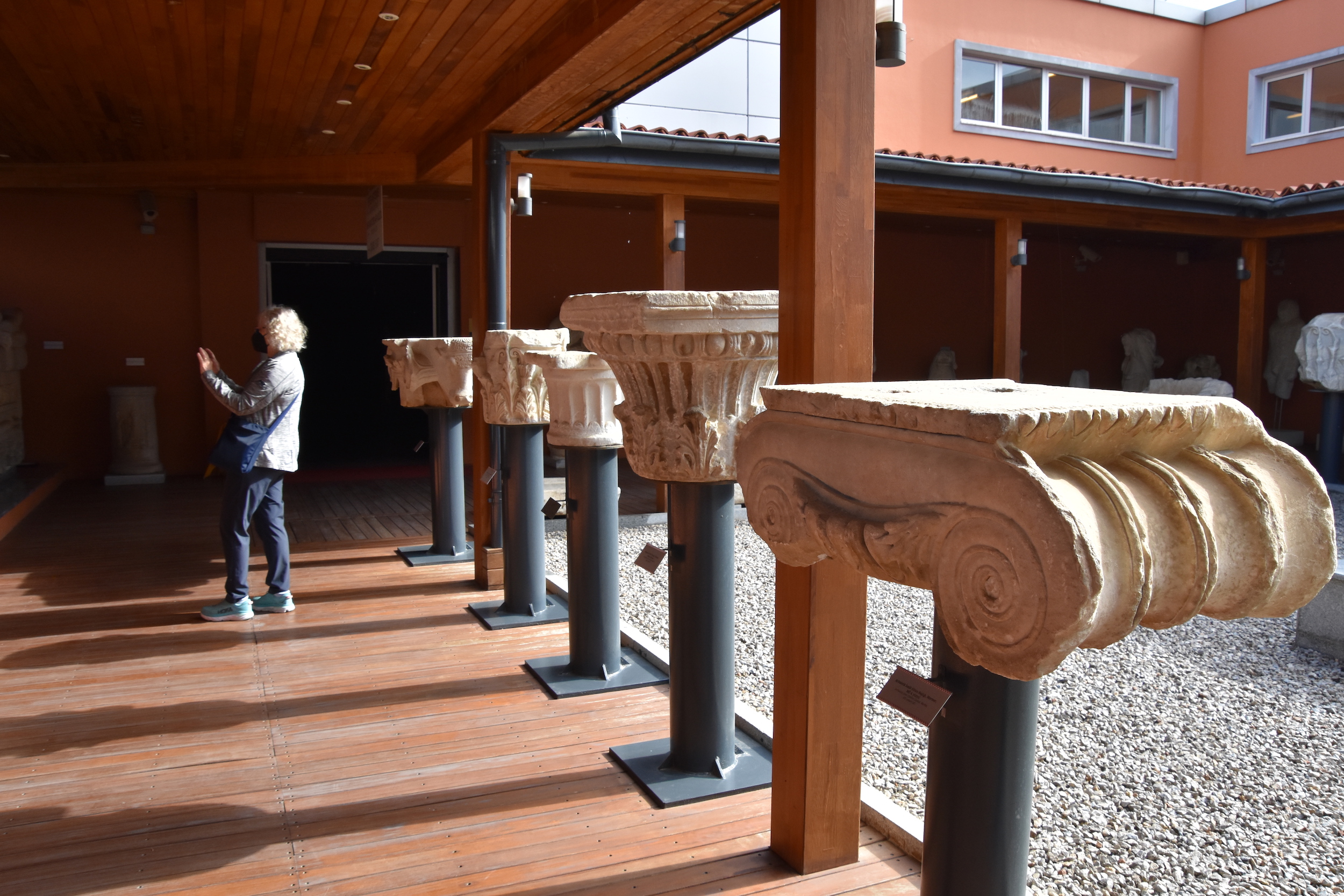
Also outside is this head of a griffin from the 3rd century BCE which has a distinctly Oriental appearance.
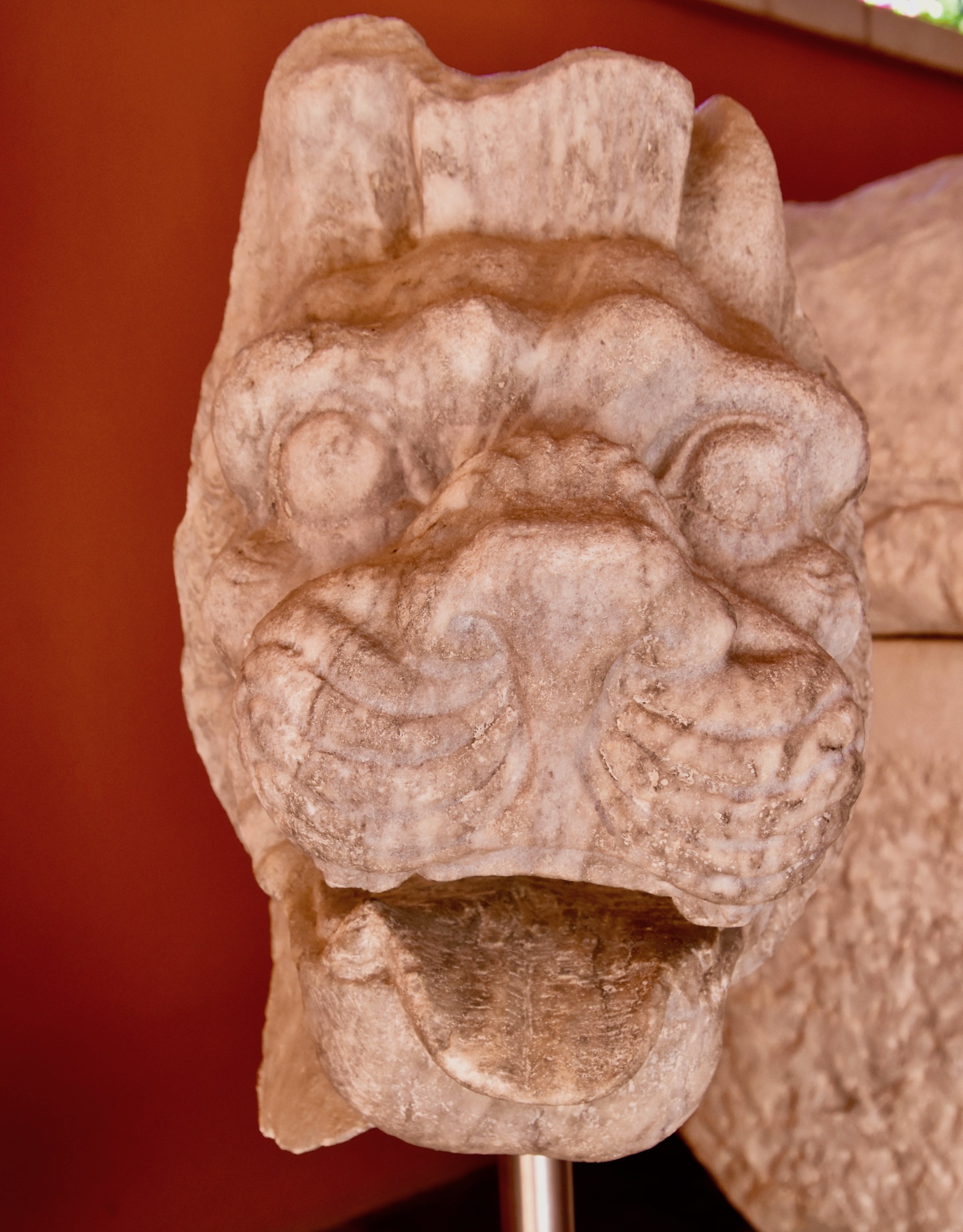
Returning inside you come to a small dark room which is dedicated to the Cult of Cybele which is a fitting introduction to the most important part of the Ephesus Museum.
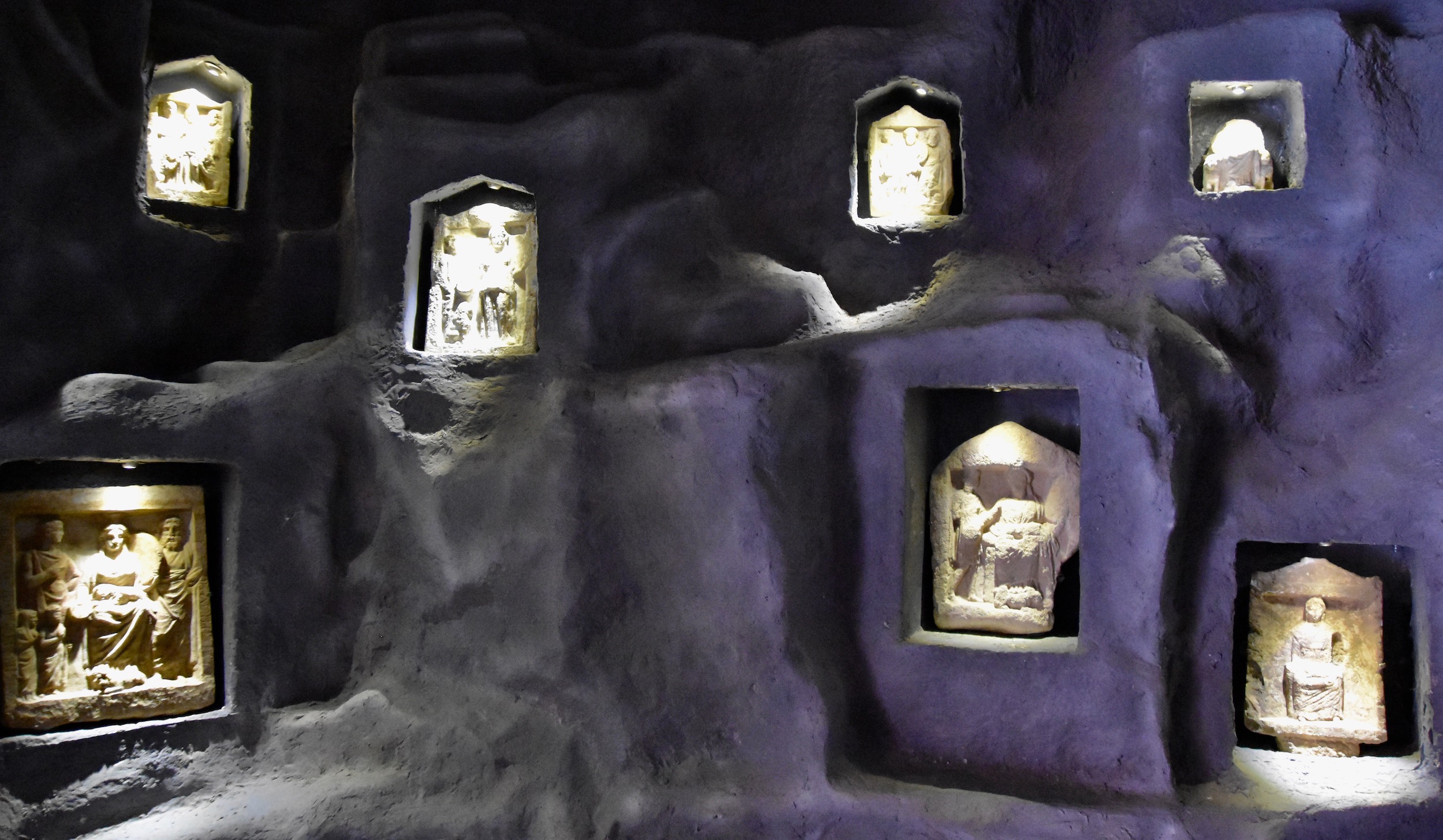
Cybele was a very ancient goddess that was once the principal deity in the area around Ephesus even before the Greeks arrived. She was worshipped as a mother goddess and protector. When the Greeks arrived Cybele began to morph into the Greek goddess Artemis who is usually portrayed as a huntress, but not at Ephesus where by the 6th century BCE it had become the principal centre for the worship of Artemis.
The site of the famous temple was considered sacred even long before the Greeks arrived. All told there were three temples constructed at Ephesus. The date of the construction of the first one is unknown, but it is known that it was destroyed by a flood in the 7th century BCE. These are two bronze artifacts that date from that first temple period.
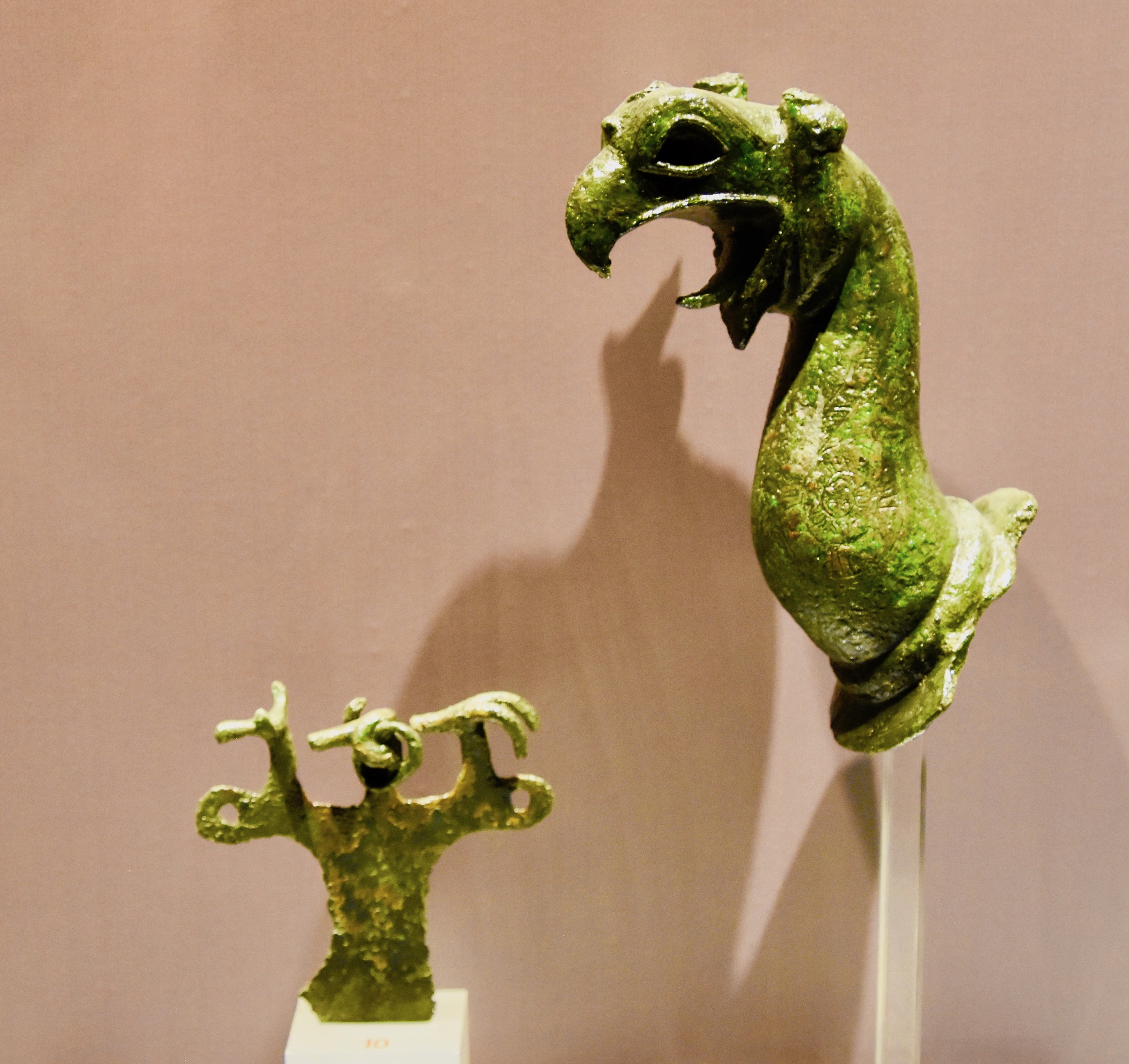
This is a gold statuette from 640 BCE which was the period of time when the second Temple of Artemis financed by Croesus of the ‘Rich as Croesus’ fame, was at its zenith.
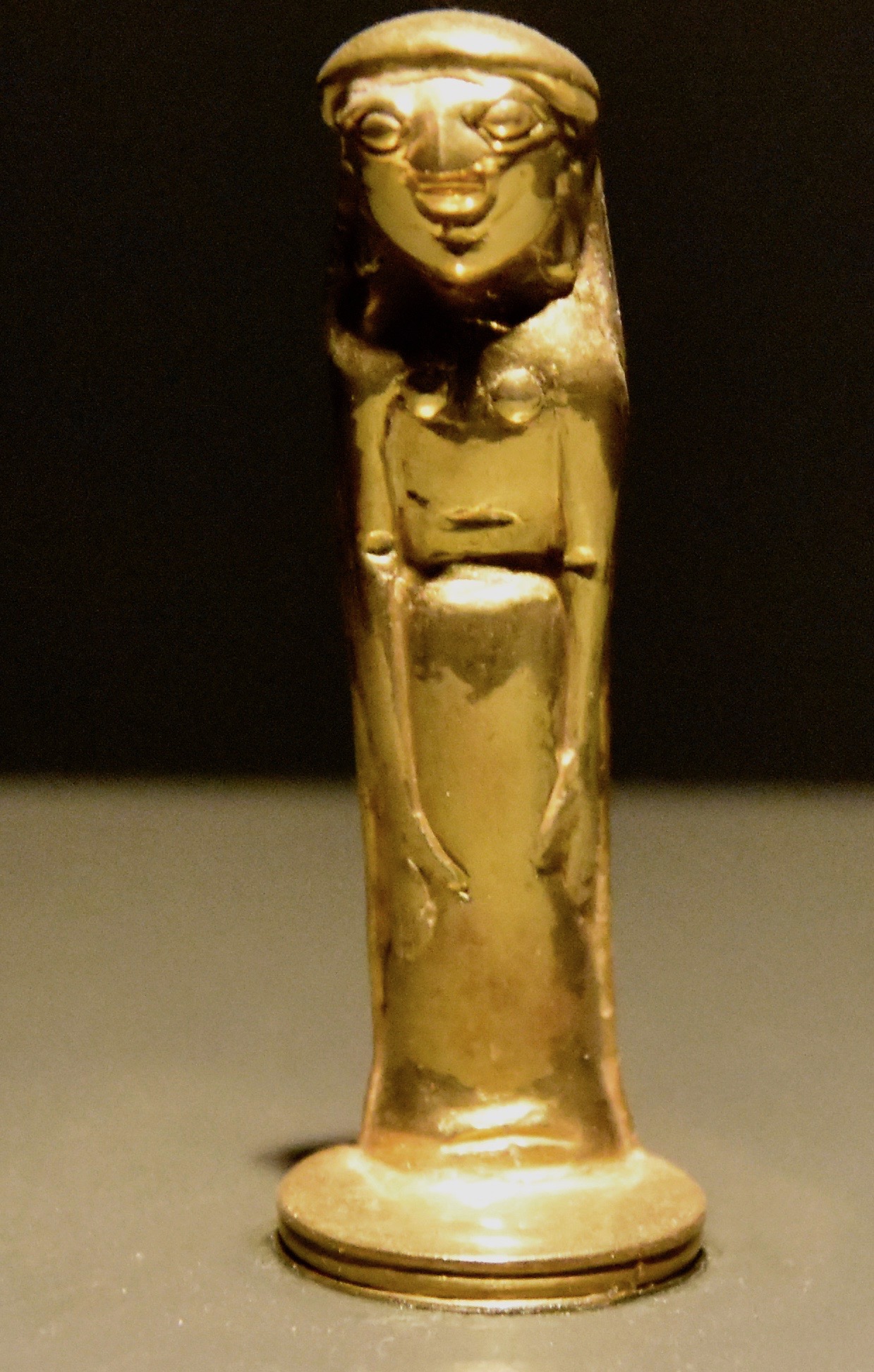
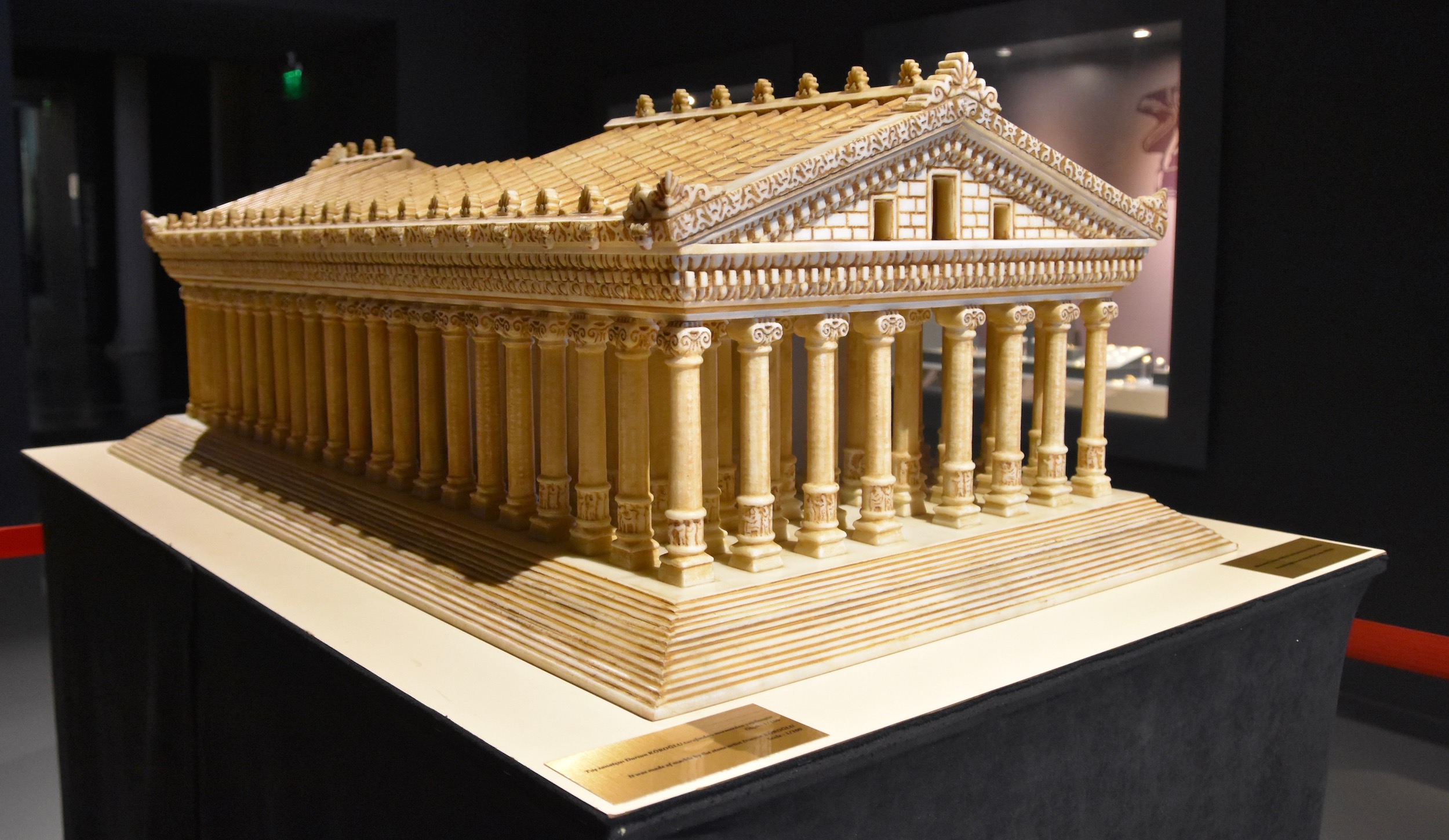
After examining the model of the temple you pass into a darkened room with only two objects which face each other. Be prepared to be amazed.
This is the goddess that Artemis had evolved into after absorbing Cybele’s traits and the one to whom the great temple was dedicated. This is about as far removed from the traditional Greek notion of Artemis the huntress as you can get. It is a classic case of syncretism which I have written about in numerous posts from Mexico and Central America. In those cases it is the combination of Christian and Indigenous gods. In the case of Artemis of Ephesus it is the amalgamation of Greek, Persian, Babylonian and other goddesses of an area stretching from modern day Iran to Greece and north Africa. Let’s start at the top and work our way down.
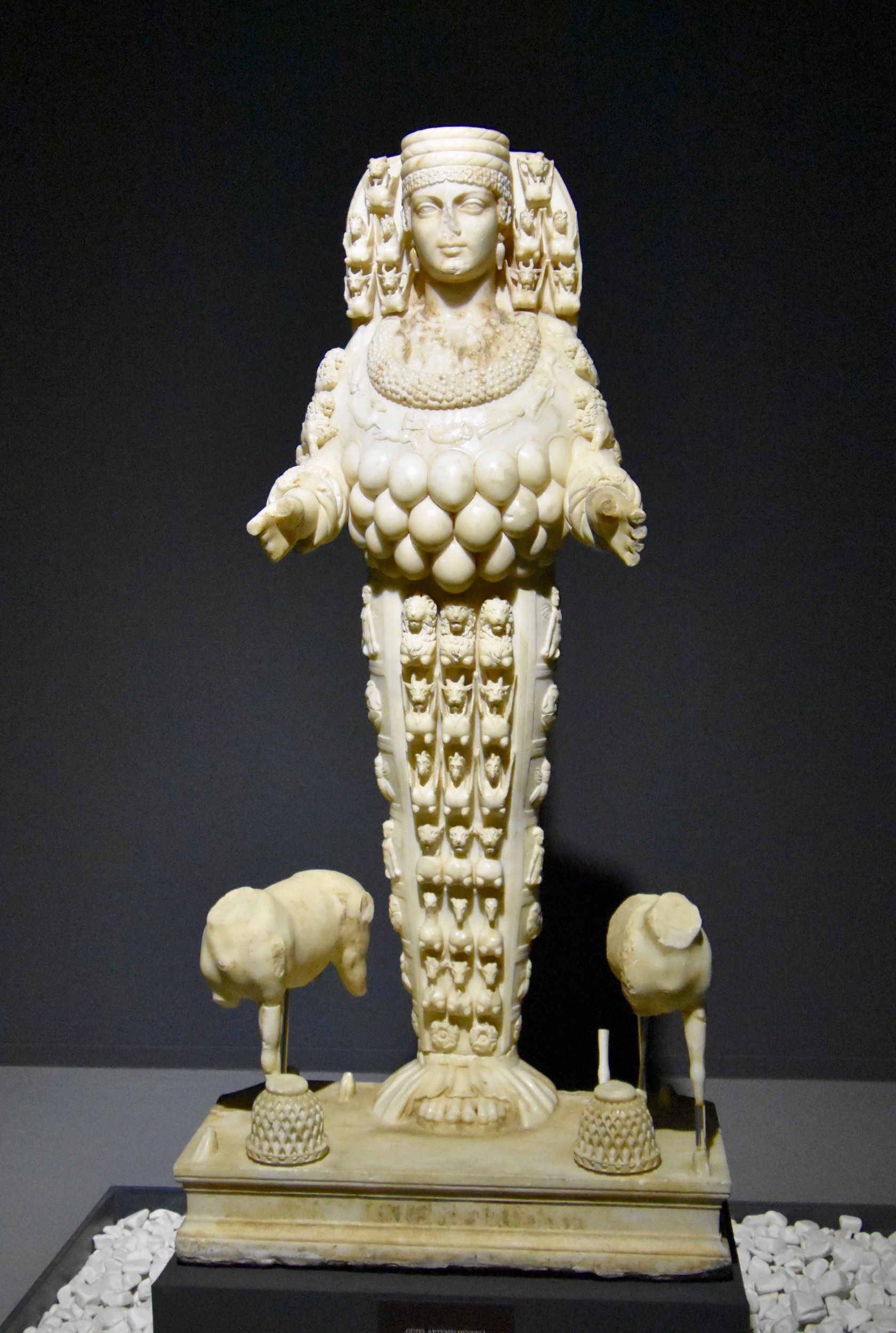
She is wearing what is referred to as a mural crown which originated in Assyria, but became popular throughout the Hellenistic world. There are five kneeling winged beasts on each side of her head and two lions on each side of her shoulders. Down the front of her dress are six rows of kneeling lions, both male and female and various depictions of bulls. Below the necklace is a second one with signs of the Zodiac which originated in Babylon. The most striking feature are what at first glance appear to be a bevy of breasts. However since they don’t have nipples, it is now thought that they are bull’s balls. Almost everything about this statue has to do with fertility. About the only thing recognizable from the ‘typical’ statues of Artemis are the two deer at her sides.
I must admit that the first time I looked at this statue I was a bit repelled, but the more you look at it the more beautiful it is. Thus it’s name Artemis the Beautiful, distinguishing it from other similar depictions including the one she is looking directly at across the room.
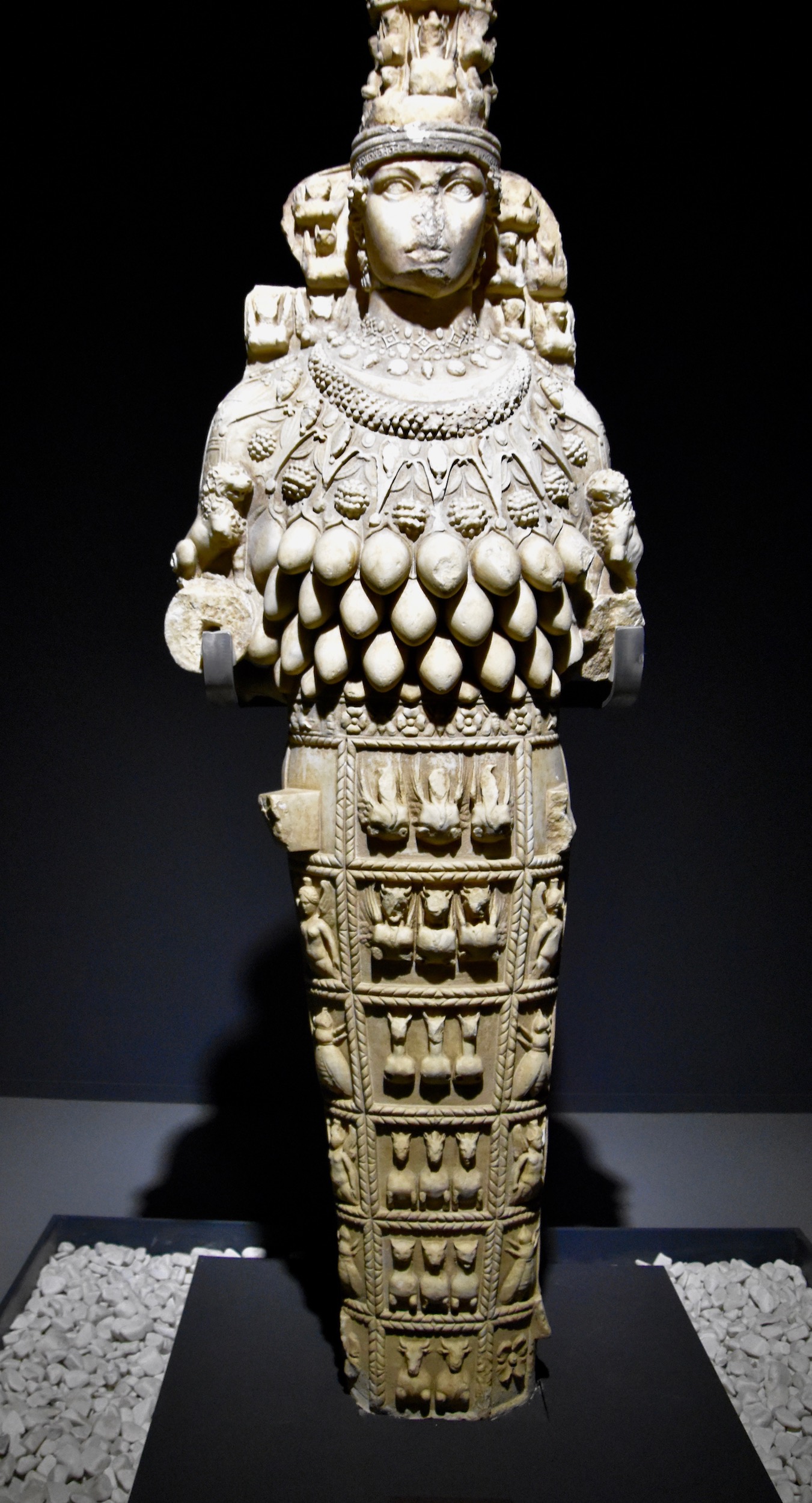
This is referred to as the Great Artemis and it has many of the same symbols as on the Beautiful Artemis, but in different proportions. In this statue bees and rosettes are prominent while they are barely visible in the other statue. I have made the cardinal photographic sin of cutting off the top of her crown which has a replica of the great temple on the very top.
Both of these statues are Roman copies of what are believed to be much more ancient originals that are long gone. Other copies have been found throughout the Roman world. For the early Christians these statues were the epitome of paganism and Ephesus its epicentre. St. Paul came to Ephesus and remained for two years finally setting up a showdown with the Artemis followers known as the Riot of the Silversmiths that is described in detail in Chapter 19 of The Acts of the Apostles. They were powerful symbols then and remain so to this day.
In the final rooms in the Ephesus museum you once again come face to face with the Roman emperors starting with Domitian who was a major benefactor of the city. Later we will see where his large fountain provided water and beauty to the inhabitants.
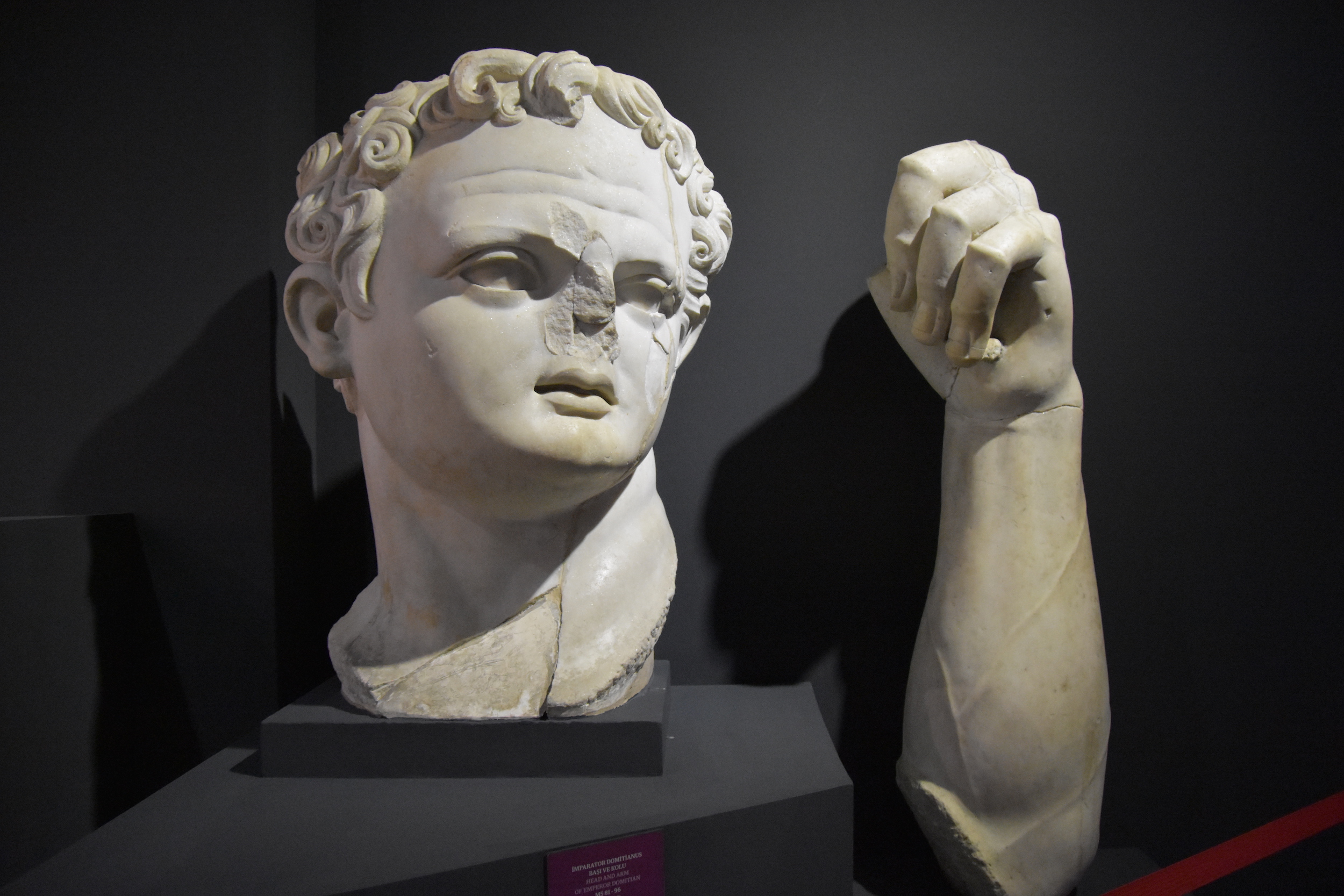
Next is Commodus who we learned in an earlier post was murdered by his wrestling partner and not by Russel Crowe.
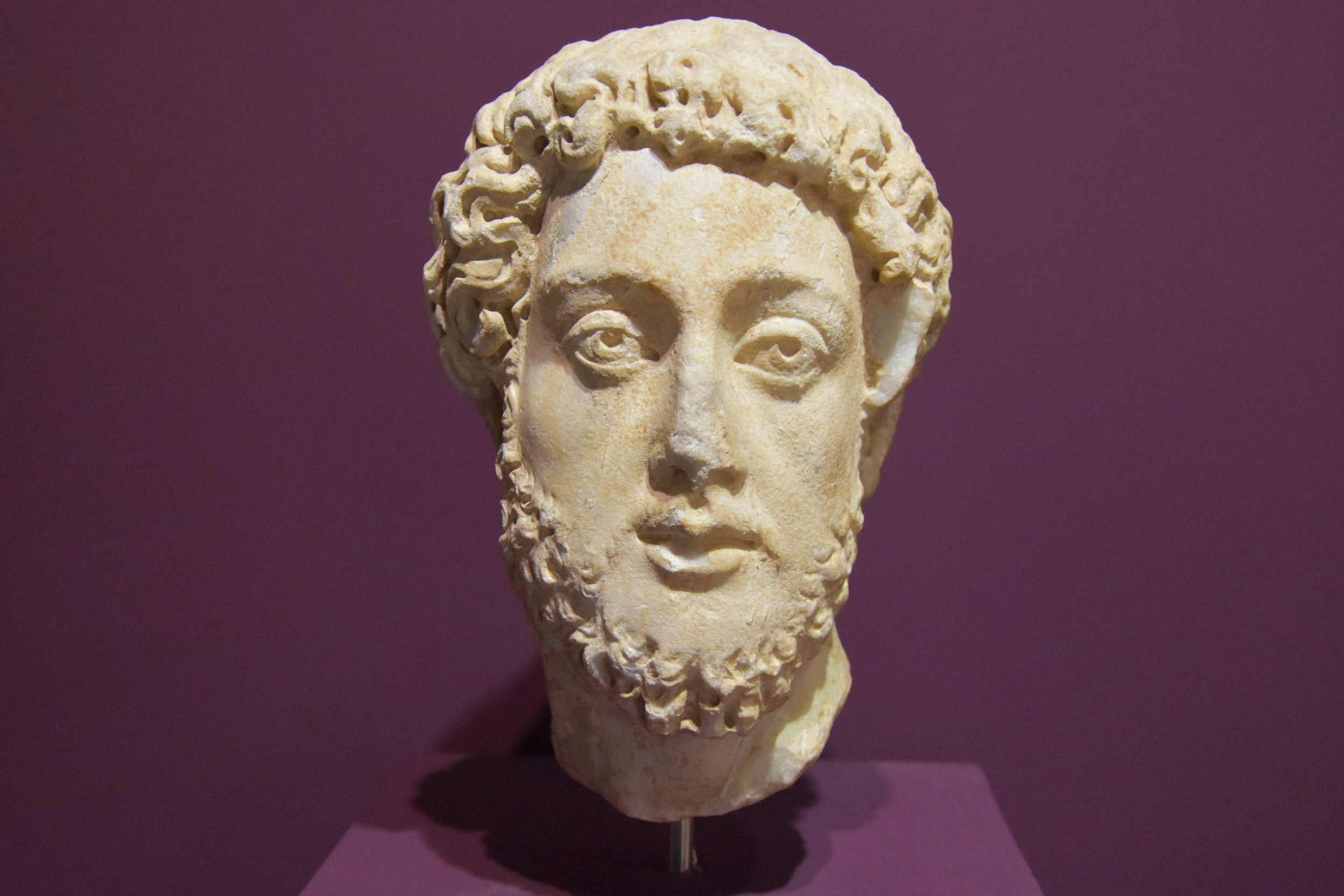
We end our visit with this photo of the greatest of the Roman Emperors, Augustus who also happened to be the first. Here he is with wife no three, Livia. If you are a fan of the great BBC series I Claudius you will no doubt think of Livia as a monster, but this was more a creation of author Robert Grave’s imagination than historically accurate. While she was certainly devious, Livia was also a stabilizing effect on her husband and was part of one of the most successful marriages in antiquity.
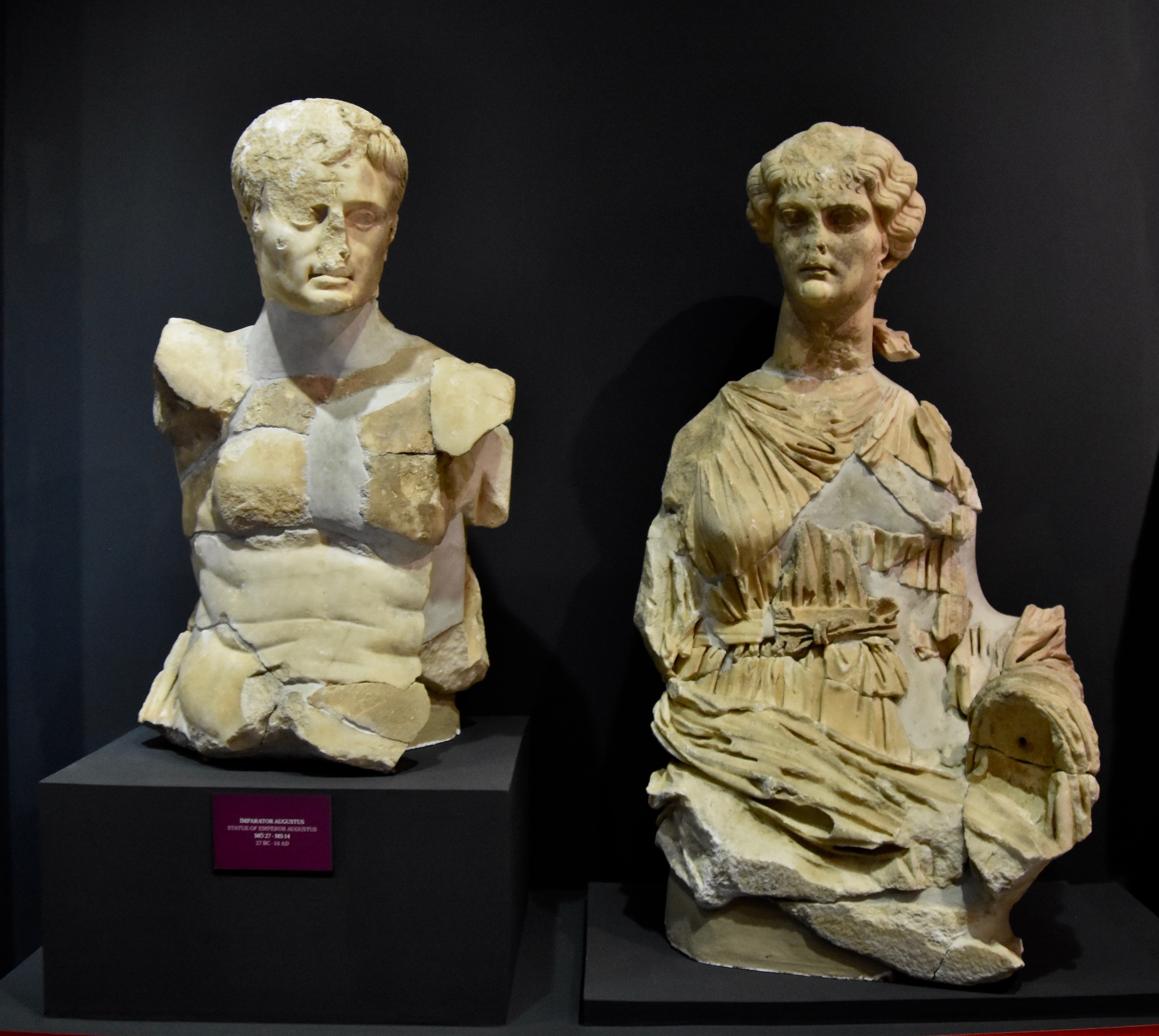
It’s time for some lunch before continuing our explorations in the Ephesus area. Yasemin leads us into the centre of Selçuk where this larger than life reproduction of Artemis the Beautiful provides a protective gaze over the city.
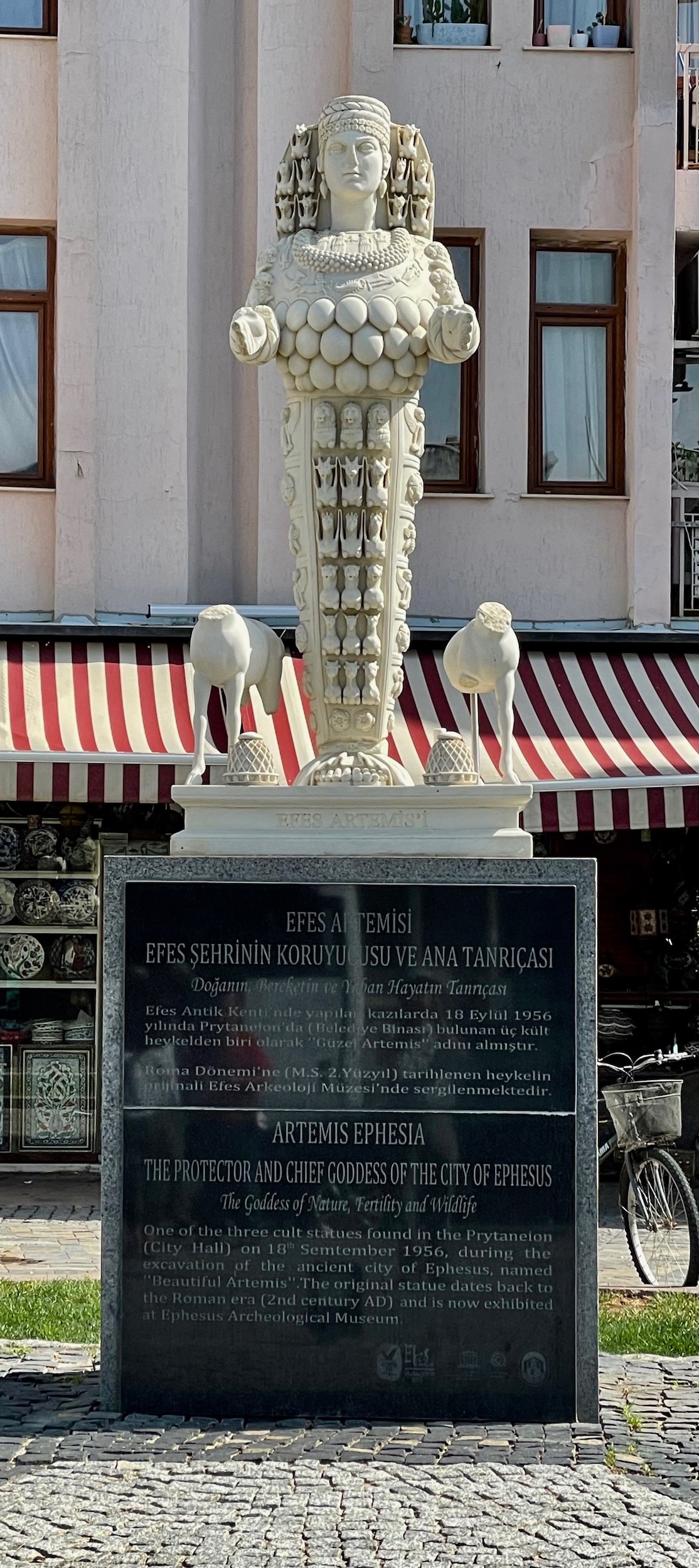
A few metres away from the statue there is a kind of restaurant row with no cars and outdoor seating. We choose a restaurant simple called Tat that’s got nothing to do with body art, but just good Turkish food at reasonable prices.
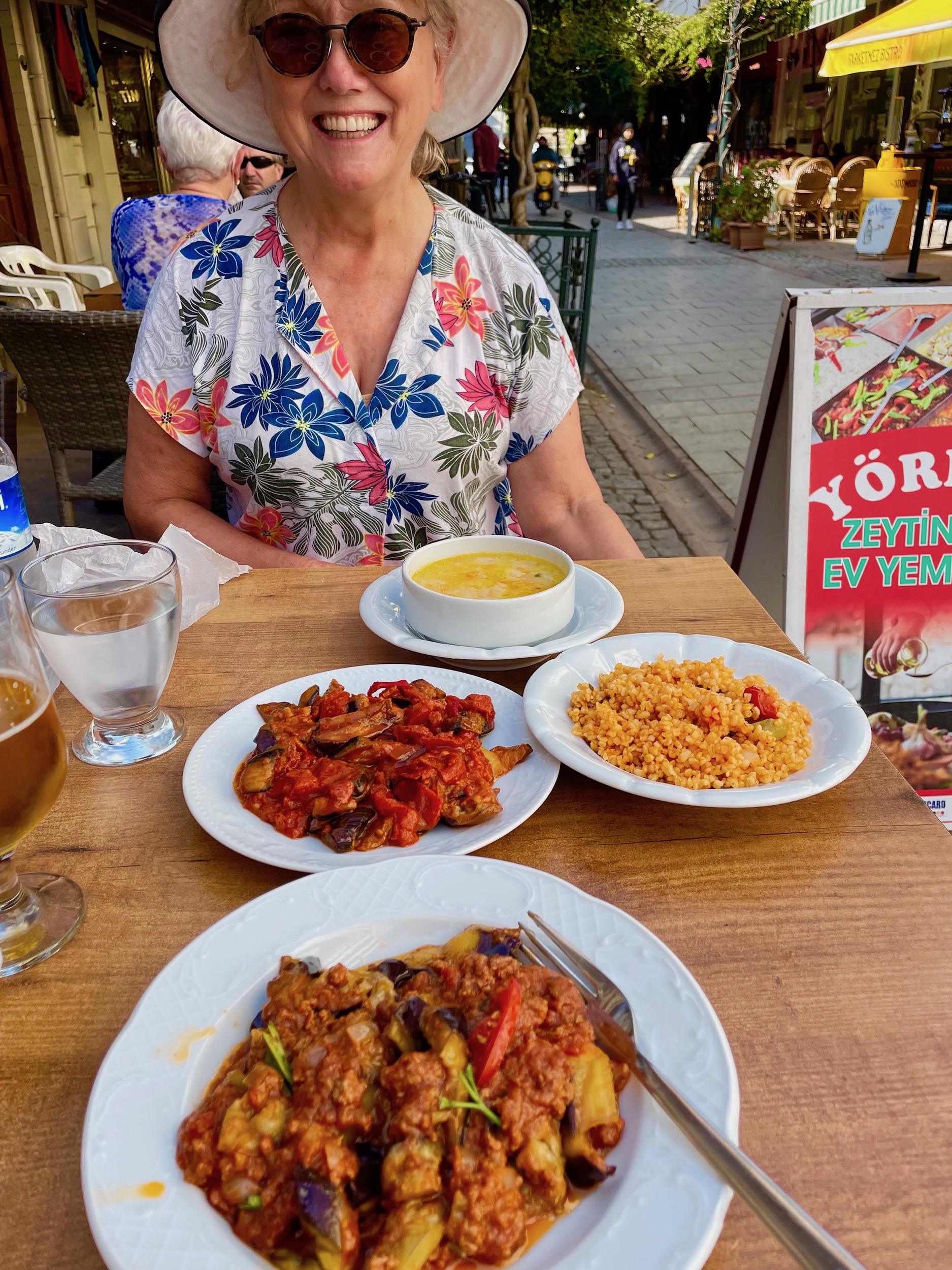
After lunch we’ll continue our day with a visit to the Basilica of St. John. I hope you’ll join us. Until then Serefe!
